Slave to the Game
Online Gaming Community
ALL WORLD WARS
PHOTO DIARY OF THE GERMAN 291 INFANTRY DIVISION: FROM LATVIA TO BATTLE FOR THE VOLCHOV POCKET, 1941-42. PHOTOS BY GEORG GUNDLACH. PART I
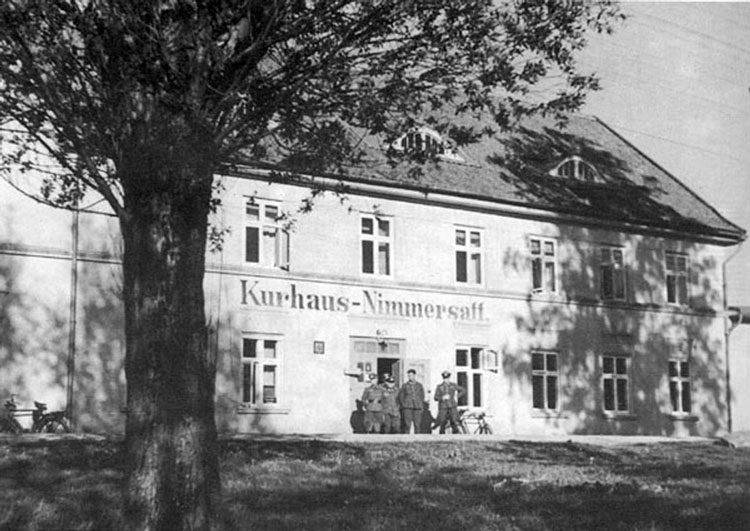
The last billet of the 506 Infantry Regiment before Russian campaign, June 20, 1941.
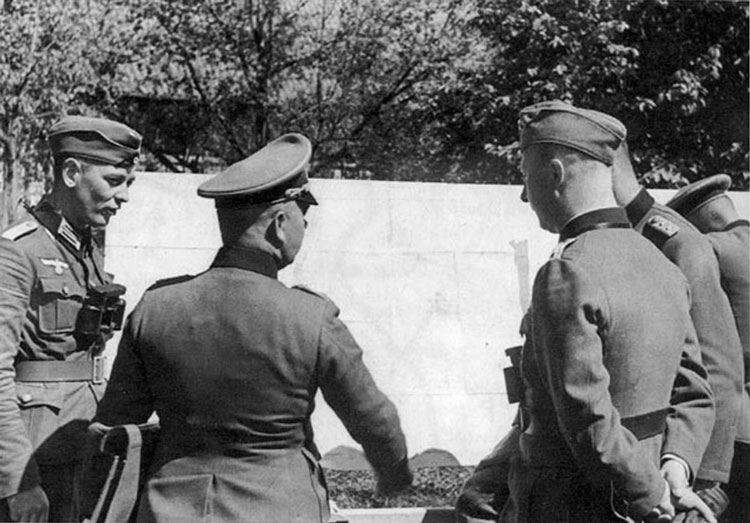
Oberst Gurran, commanding officer of the 506 Infantry regiment discussing future military actions before June 22, 1941.

Oberst Gurran introduces officers of the regiment to the Major-Jeneral Herzog.
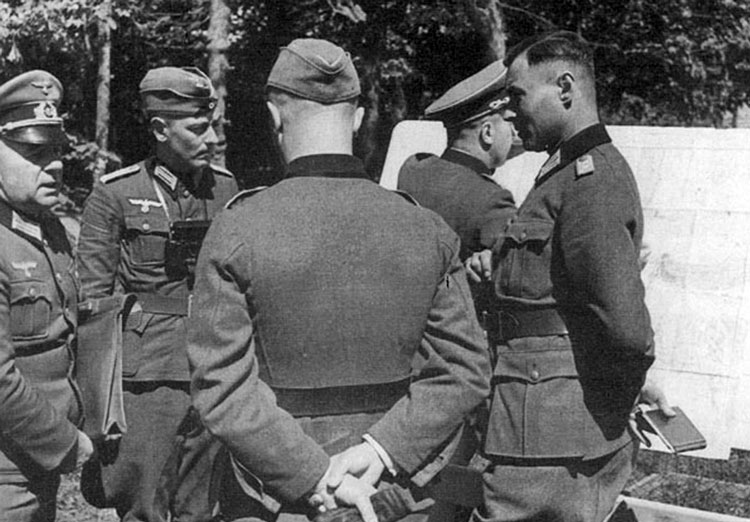
The last orders of Oberst Gurran, commanding officer of the Infantry Regiment 506.
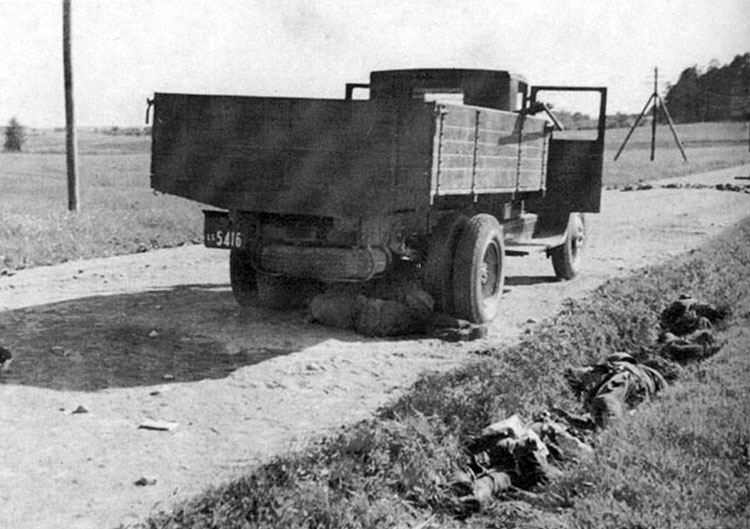
Reinforcements became victims of the machine-gun fire.
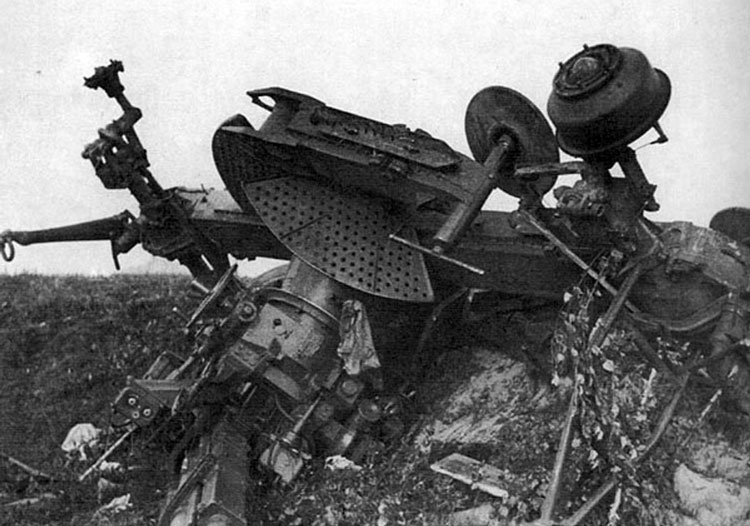
Destroyed Russian anti-aircraft gun on the road to Libau.

Russian dead in the rye field, June 1941
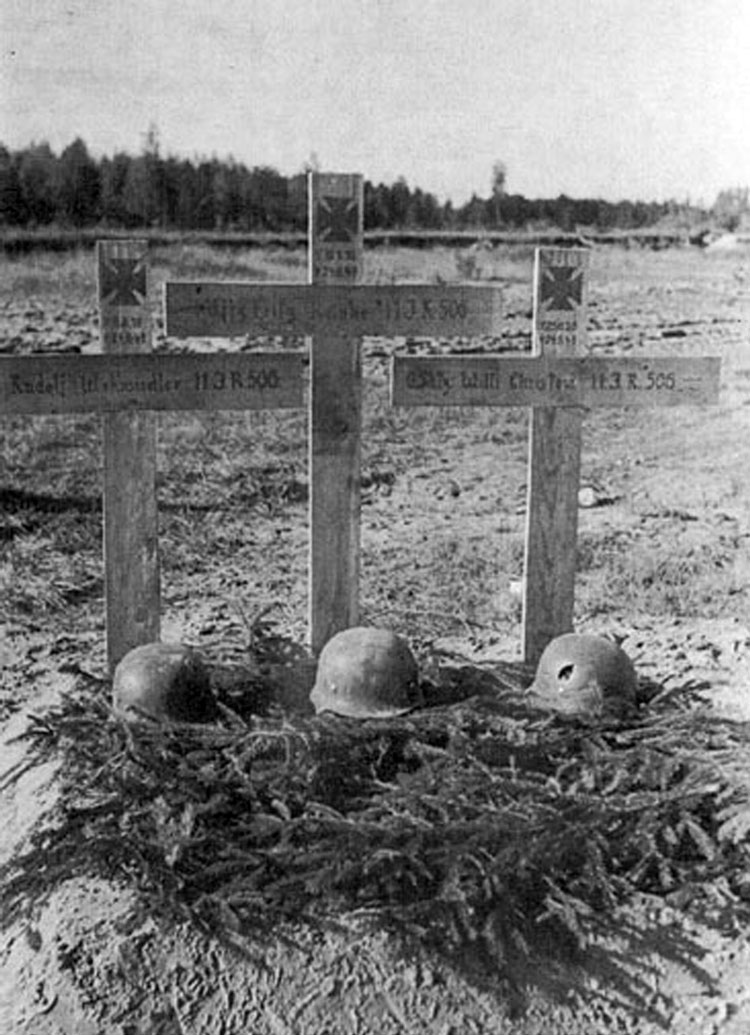
Three comrades from 11/506 , KIA in Estonia on August 24, 1941.
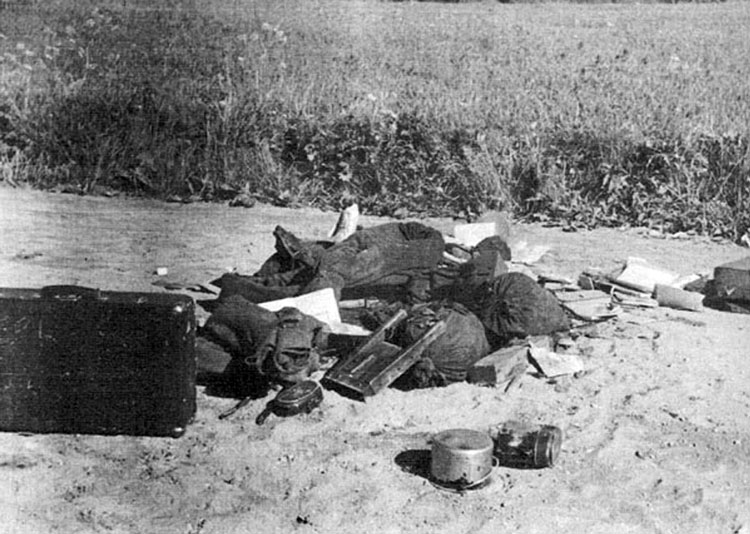
Belongings of the Soviet officer, 1941.
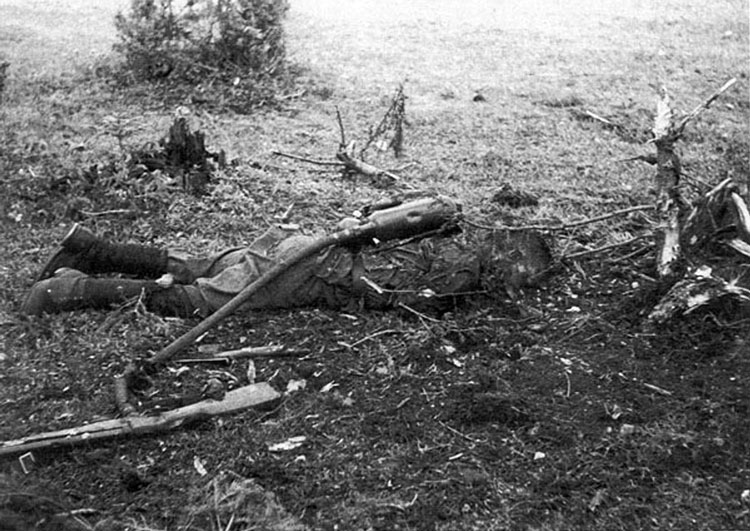
Dead Russian soldier, 1941.

Soldiers and officers listens the news from the German High Command.
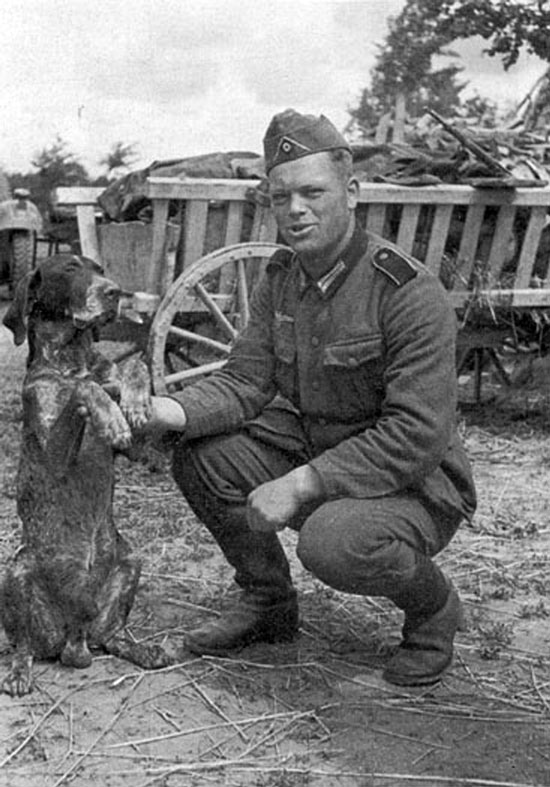
Dogs were the most loyal friends to the soldiers.

Rest on the march, refreshing drink from the flask, 1941
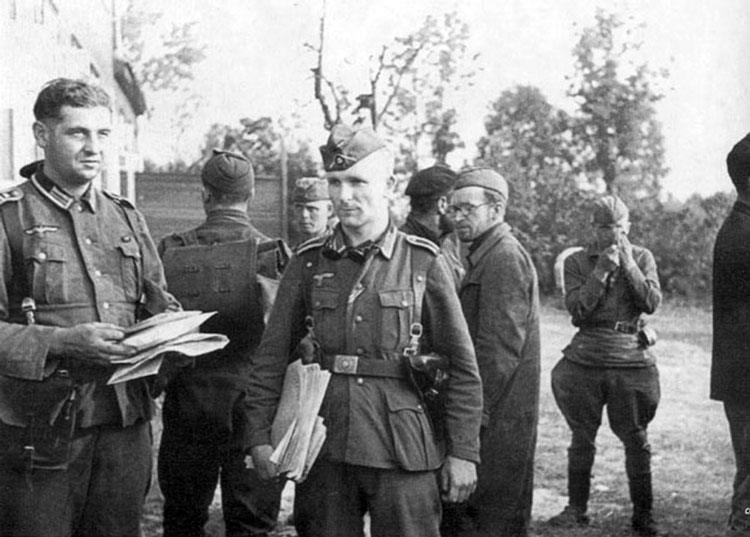
Russian POW at the Regiment HQ.
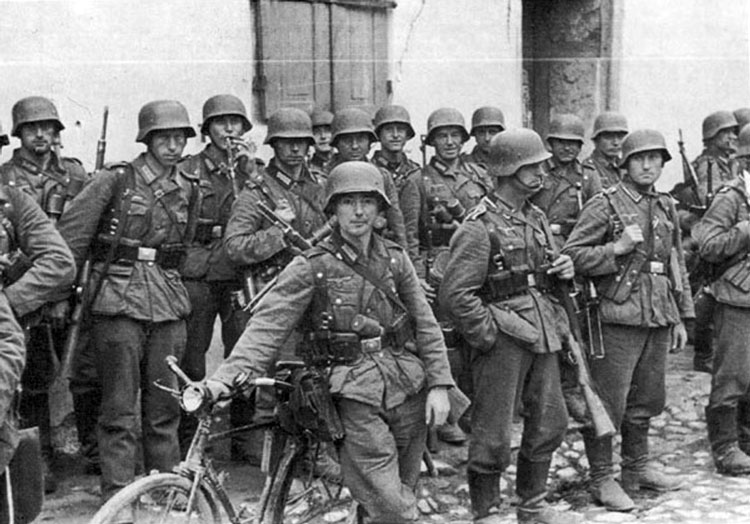
Infantrymen from Regiment 506 after first days of the Russian campaign.
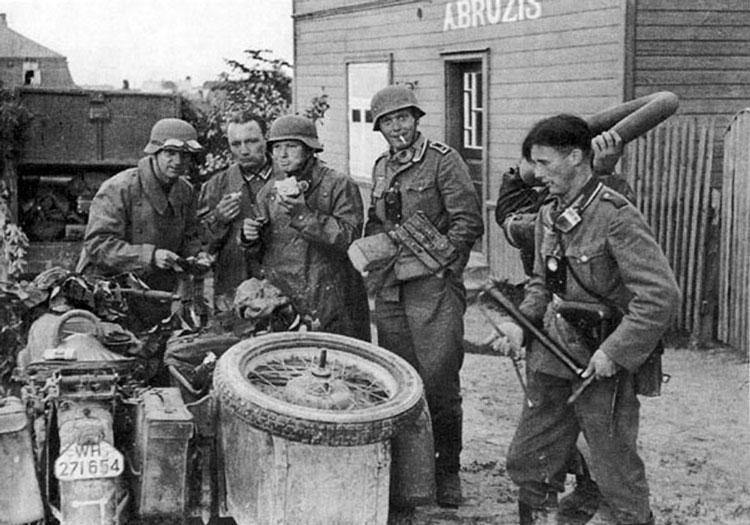
Rest and food for the relentless motorcyclists.

Photo correspondent making soldiers smile.

Soldiers fill up the large shell crater, repairing the road.

German soldiers meet Latvian population.

"Distant" marriage of Obergefreiter in Latvia.

Infantry column on the march, Latvia.

Support artillery on the march, Latvia.
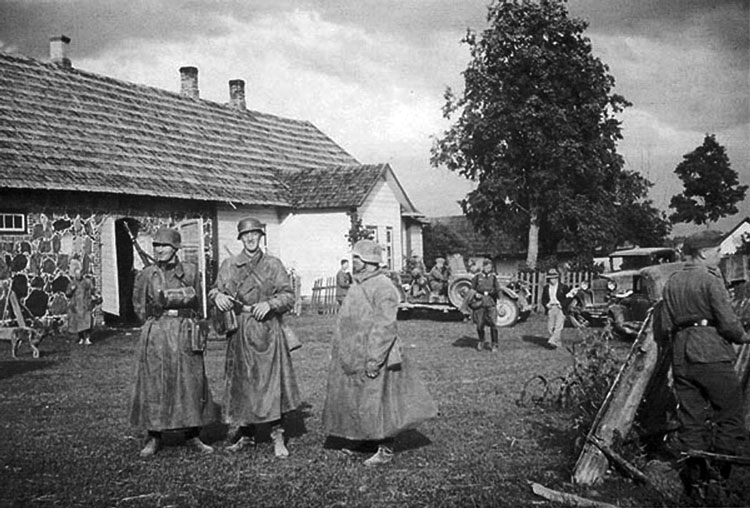
Motorcycle runners are waiting for the next order on the Latvian farm.
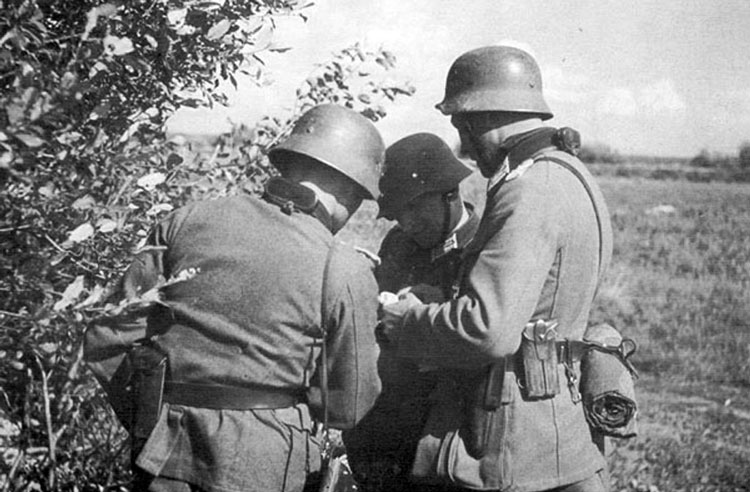
Major Krauze Battalion commander of the III/506 (in the center), Captain Voigtlander (on the right) and Lieutenant Meinel (on the left) discuss plan of actions, July 1941.
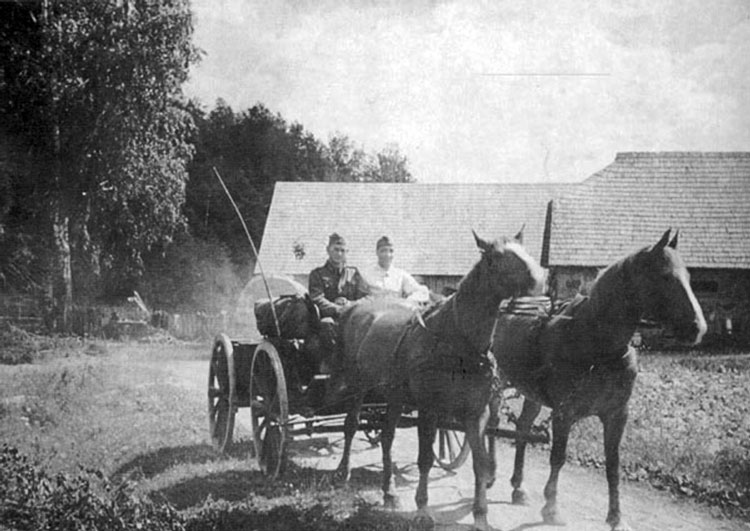
Fourier of the Regiment 506 in Latvia.

Comrades from the Cavalry platoon of the Regiment 506.

Soldiers of the Cavalry platoon of the Regiment 506 exercise in the sport riding on the beach in Pärnu (Pernau), Estonia.
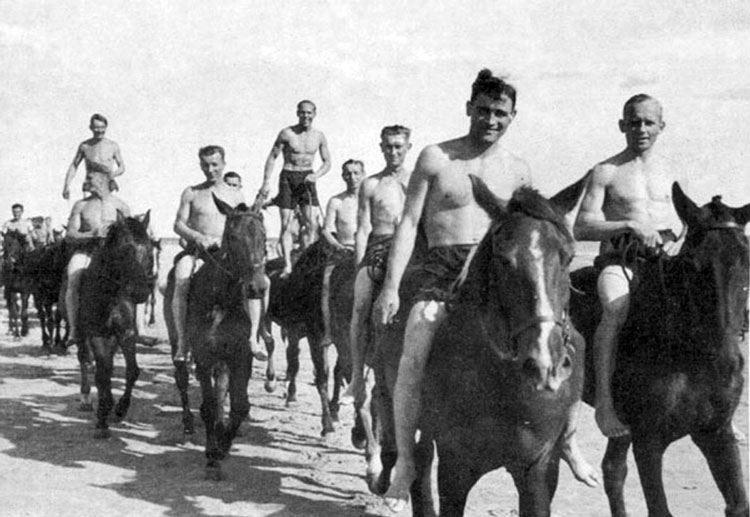
Soldiers of the Cavalry platoon of the Regiment 506 exercise in the sport riding on the beach in Pernau, Estonia.
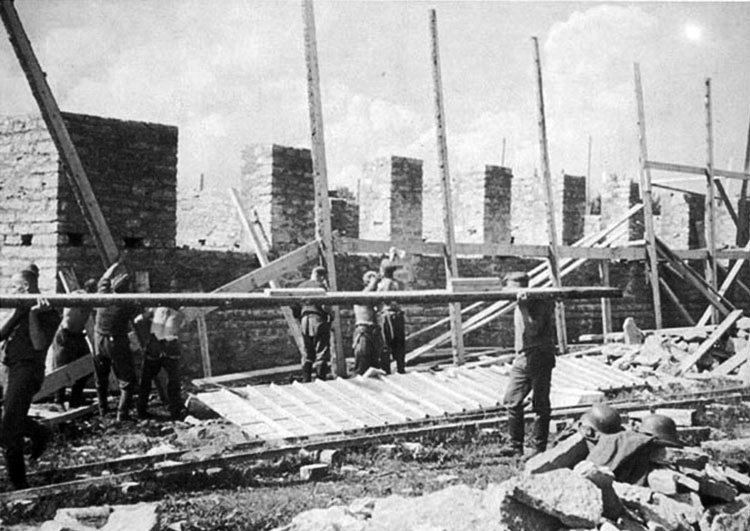
Pioneers remove construction materials near the field railroad.

Pioneers just finished construction of the bridge across Purtse River, 1941
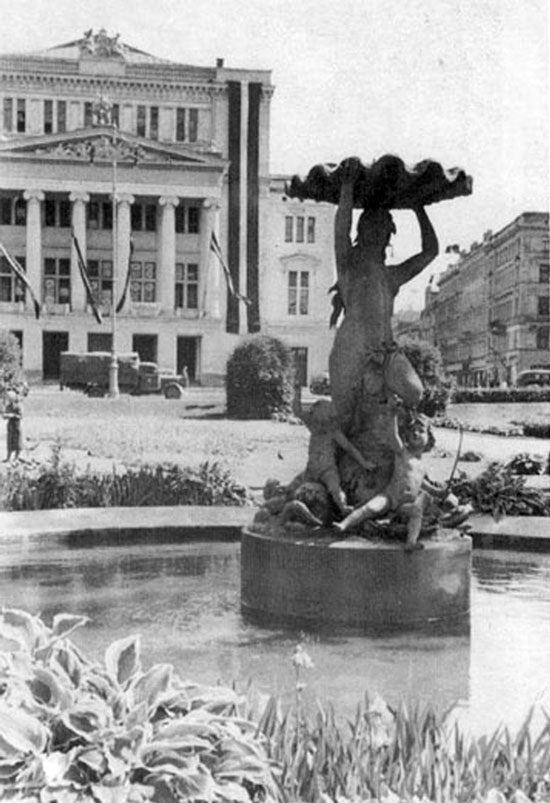
Fountain before Riga Opera

Statue of Liberty in Riga
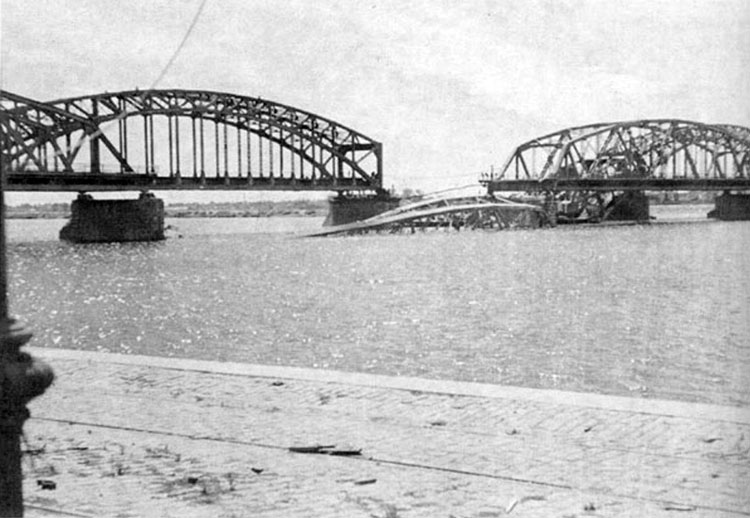
Blown up part of the Daugava Bridge in Riga, Latvia, 1941.
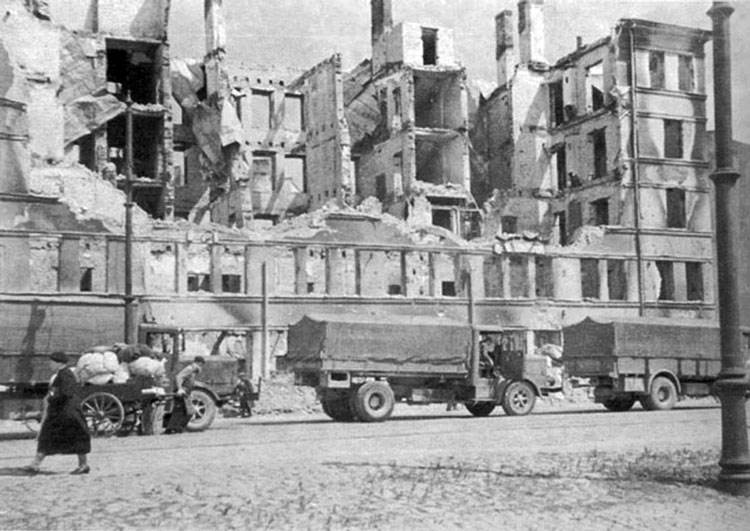
Destroyed buildings in Riga, 1941.
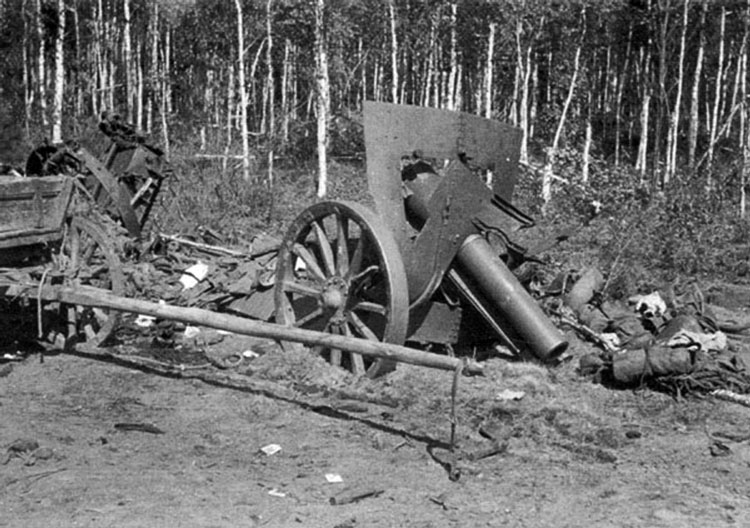
Damaged Russian gun on the edge of the forest near Riga, 1941.

Dead German soldier, 1941.
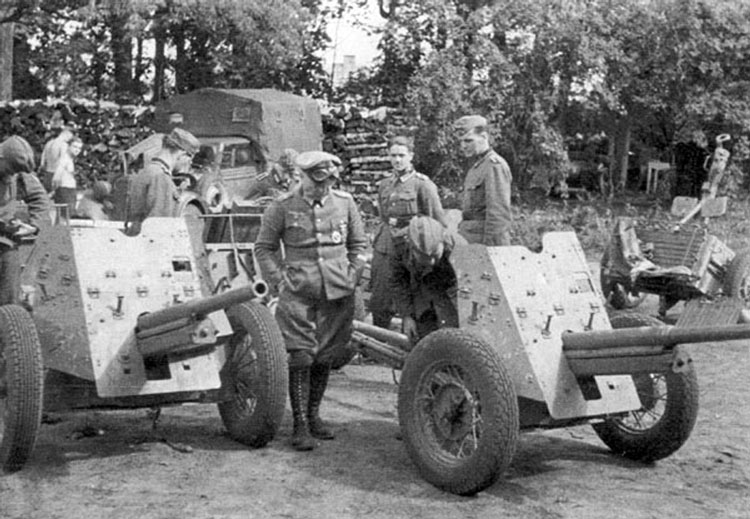
Russian 4.7cm anti-tank gun trophy after Riga capture, 1941.
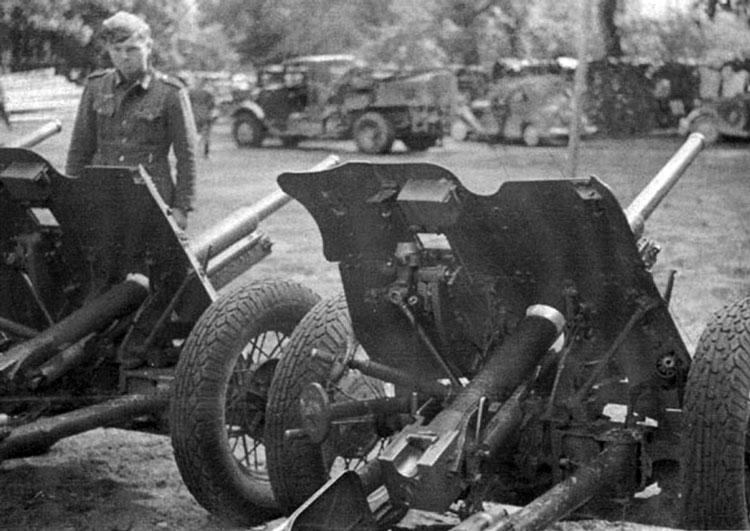
Russian anti-tank 4.7 cm guns, 1941
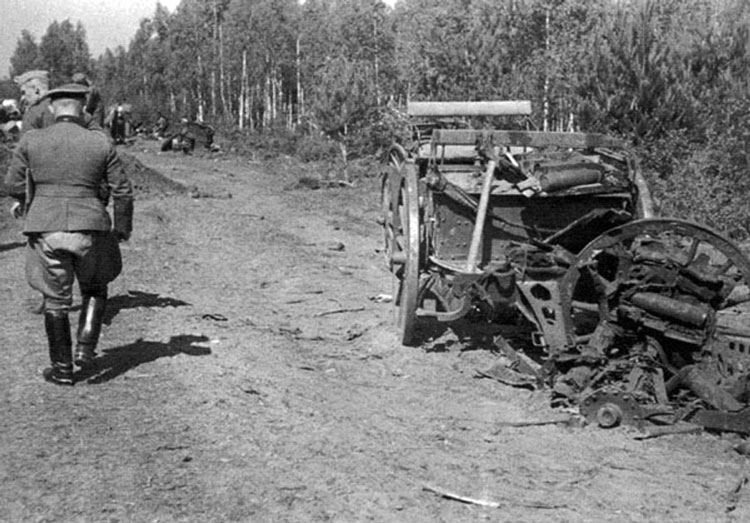
Remains of the Russian military carriages on the road near Riga, 1941.
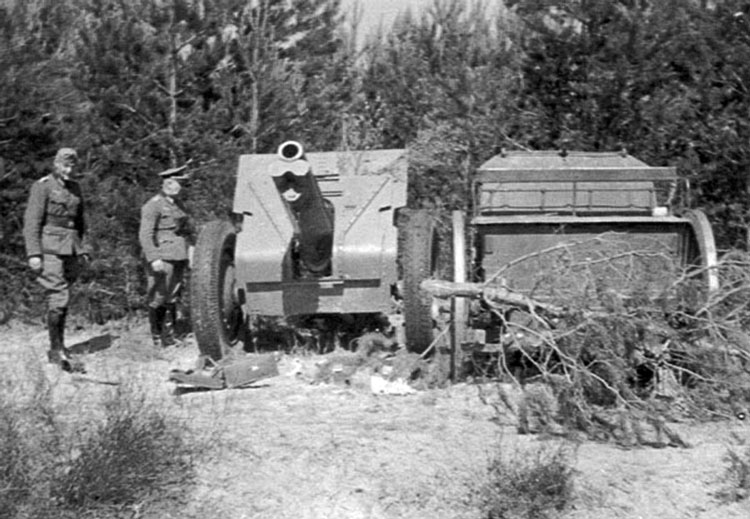
Russian gun and artillery carriage left in the forest near Riga, 1941.
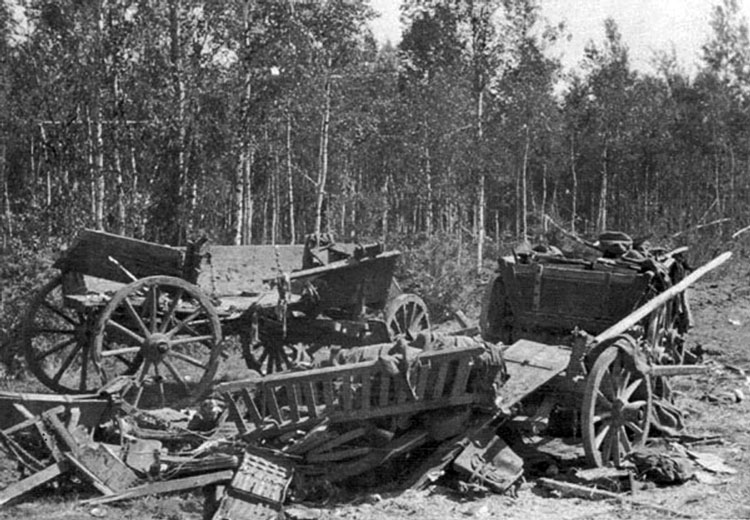
Russian carriages left in the forest near Riga, 1941.
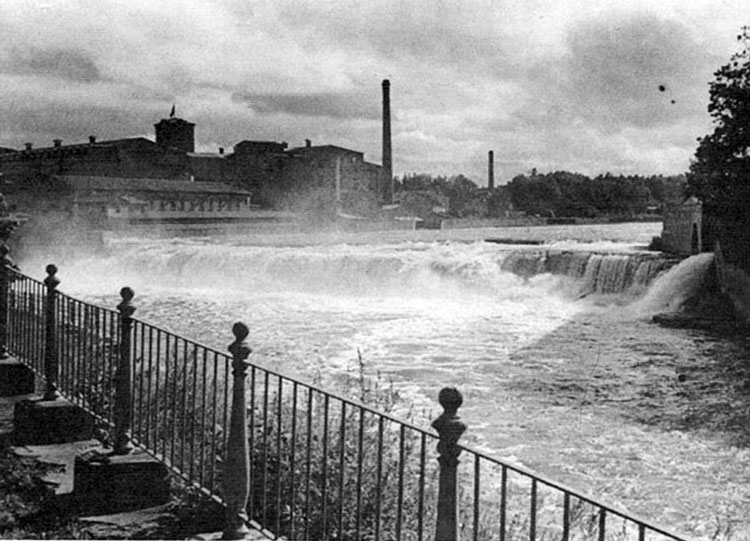
Narva dam in Estonia, 1941.

Infantry support gun on the firing position near Narva River, August 1941.
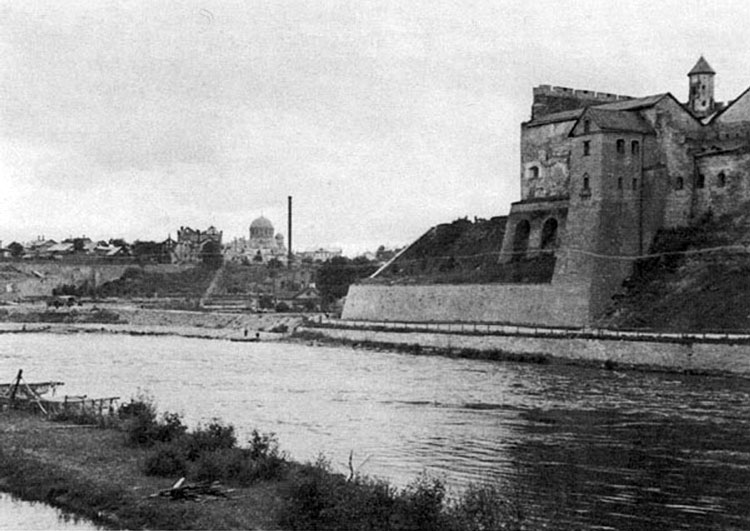
Narva River and Fortress.
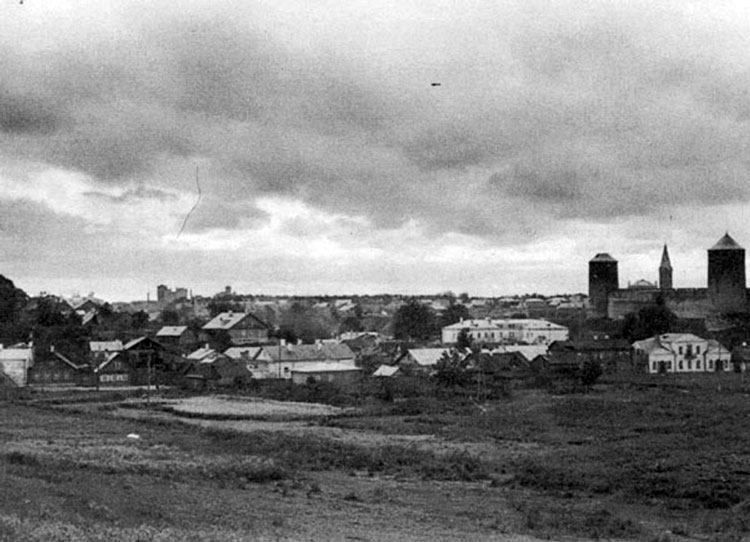
Narva, last Estonian town on the Russian border.
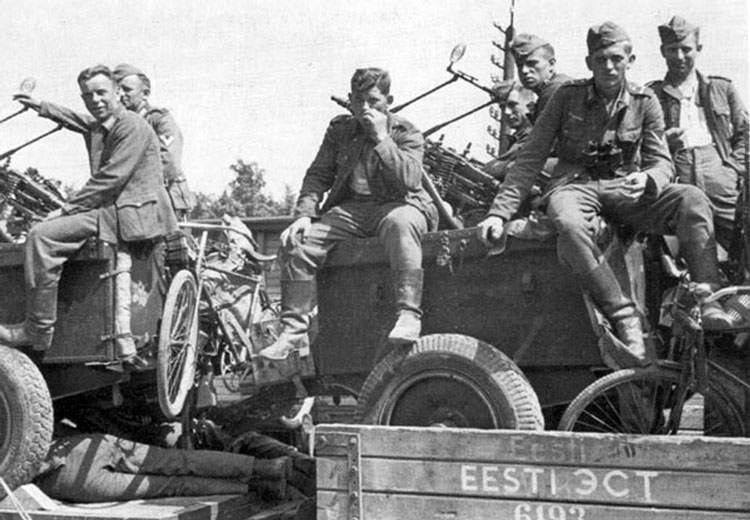
With loaded up materiel and weaponry, soldiers are waiting for the order to march, 1941.
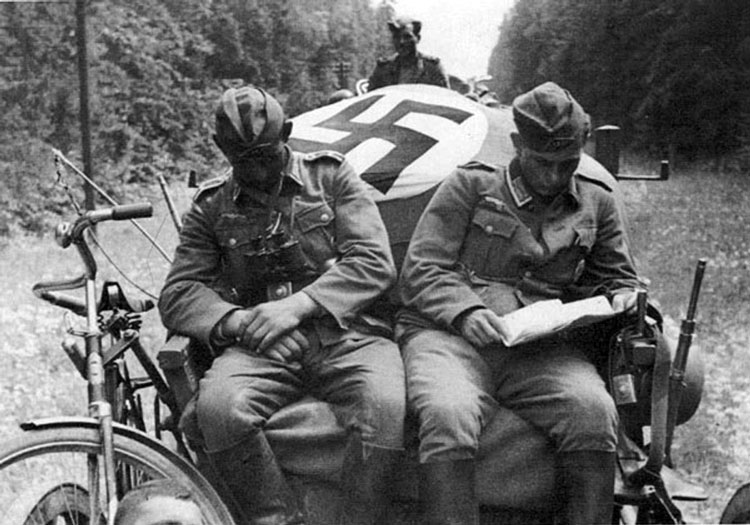
Traveling on the Estonian narrow-gauge railroad.
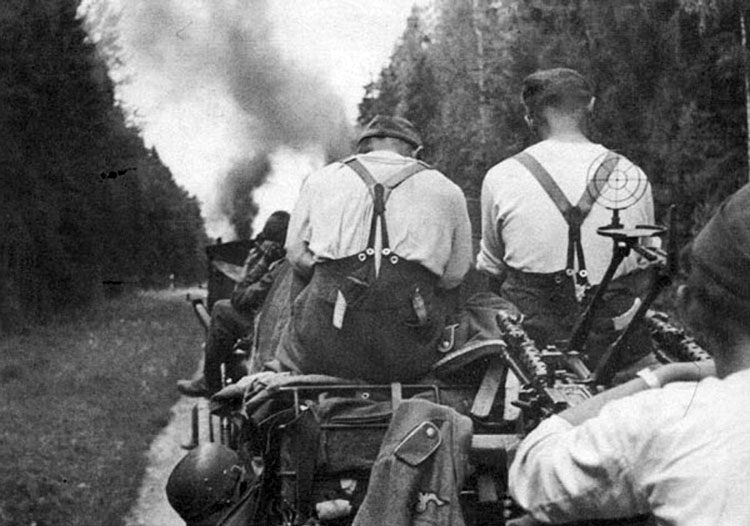
On the narrow-gauge railroad Rujena-Pernau, Estonia, 1941.
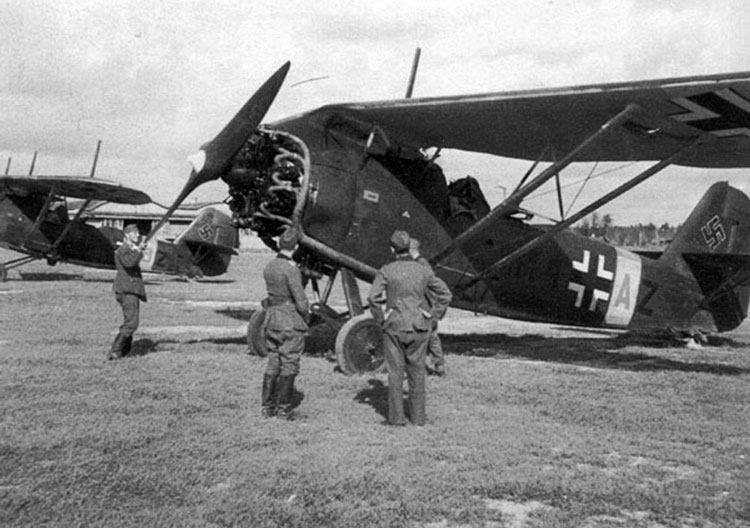
German fighter on the Siveskaya airfield.
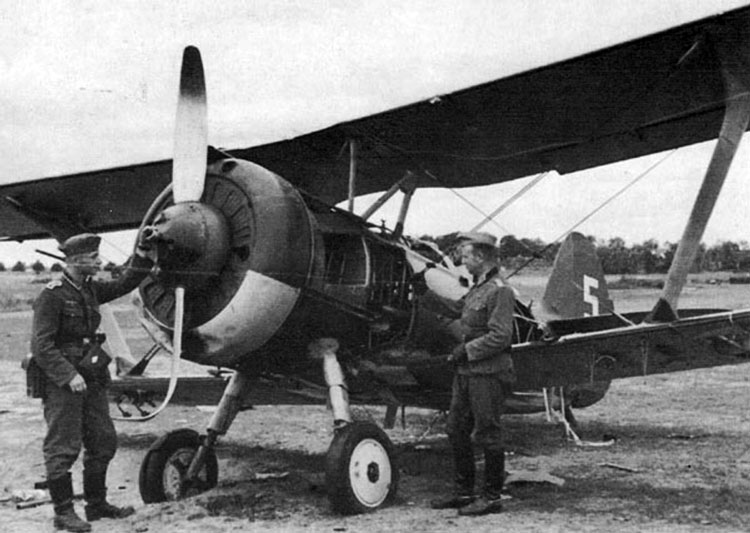
Damaged Russian fighter, July 1941.
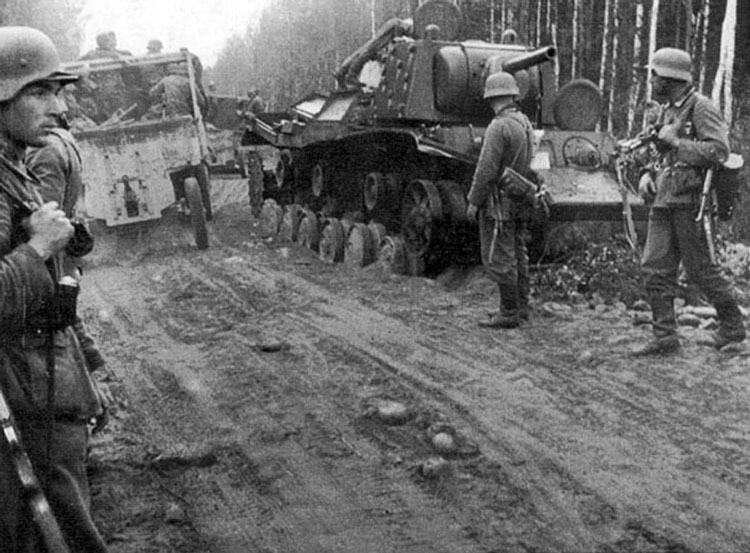
March in Luga Forest, passing destroyed Russian KV-I heavy tank.

German field howitzer (10.5 cm).

Former summer houses near Petrodvoretz, to the west from Leningrad. On September 8 1941 Petrodvoretz was taken by the German troops.

Russian women working near Gatchina, 1941.
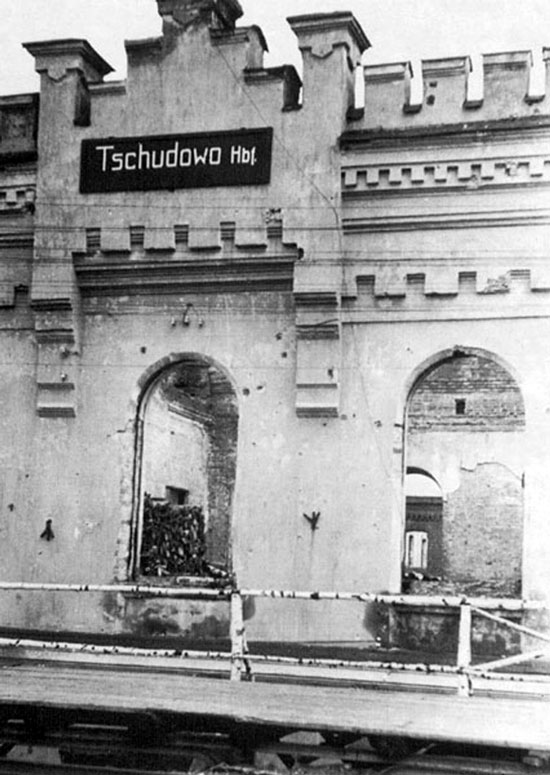
Chudovo railway station

Chudovo railway station

Soldiers of the HQ company Regiment 506 are taking fish oil.
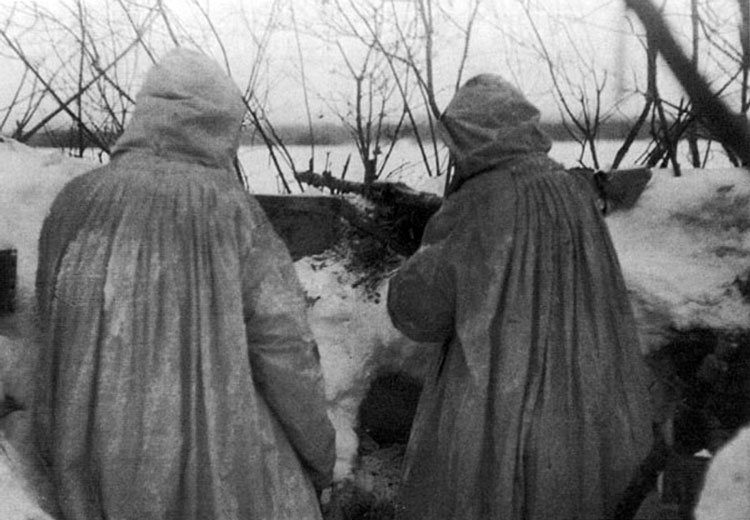
Machine-gun position in Tigoda-Volchov area, January 1942.

Feldfebel Krauze delivering mail from home.
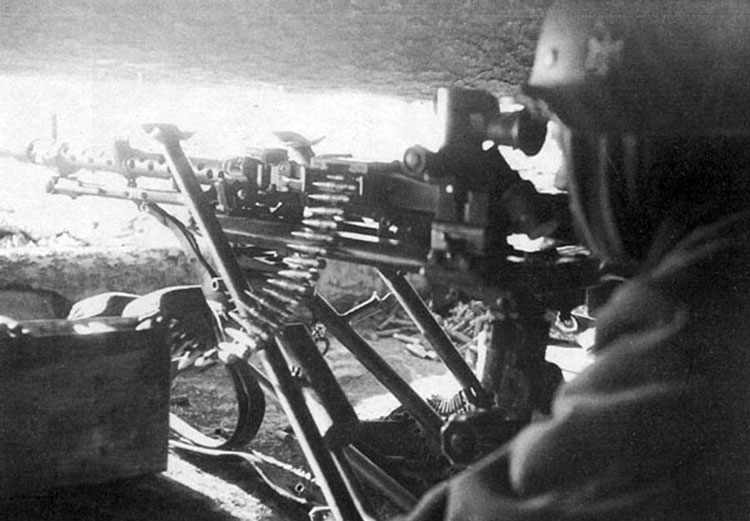
Machine gunner is ready to open fire.

Large German cemetery near Chudovo, February 1942.
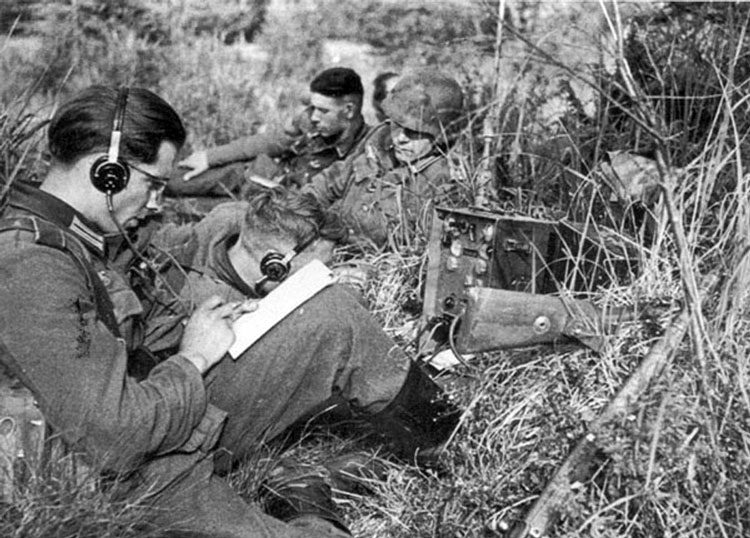
Radioman from III./506 in Volchov area, 1942.

This captured Russian tankette was again used by Germans in battle.
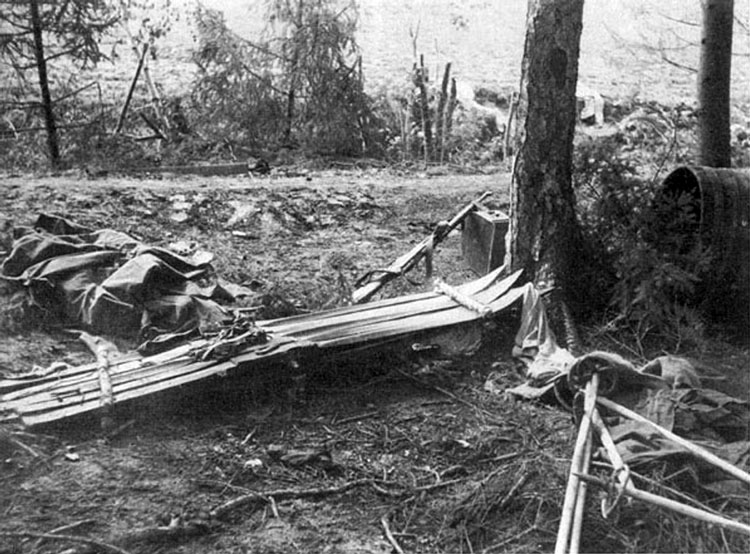
Russian skies, left from the winter fighting in Volchov area, 1942.
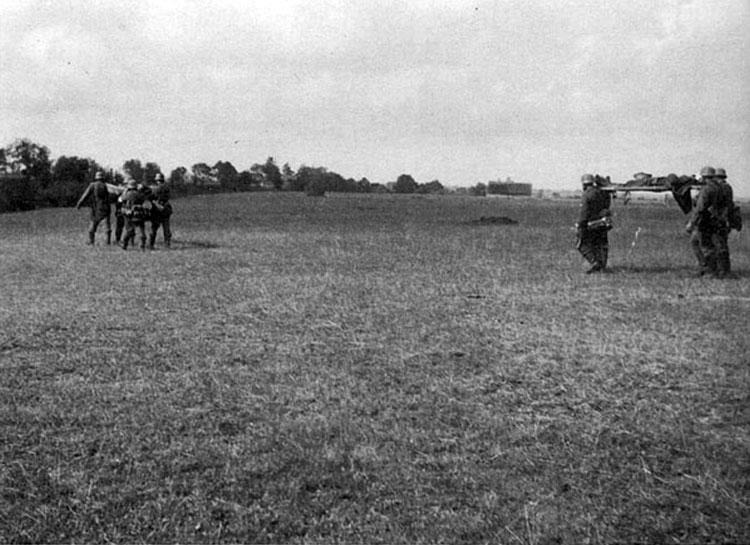
Wounded in Volchov battle are carried to the field hospital.
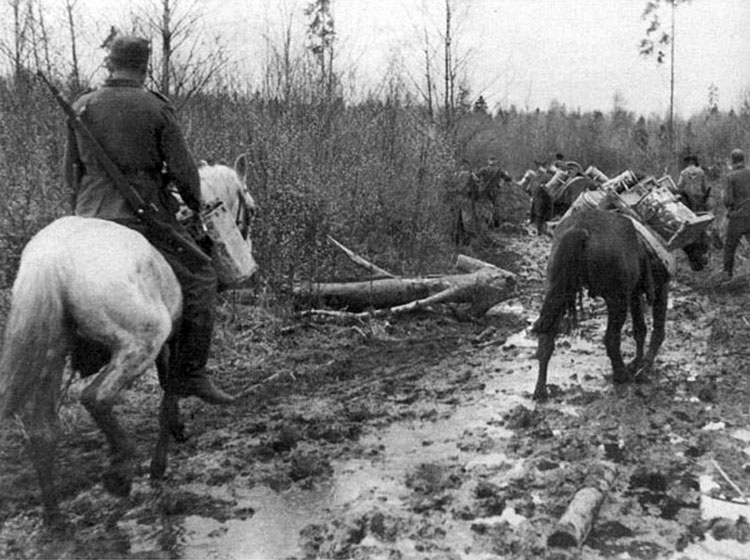
Further advance is possible only on the horses.
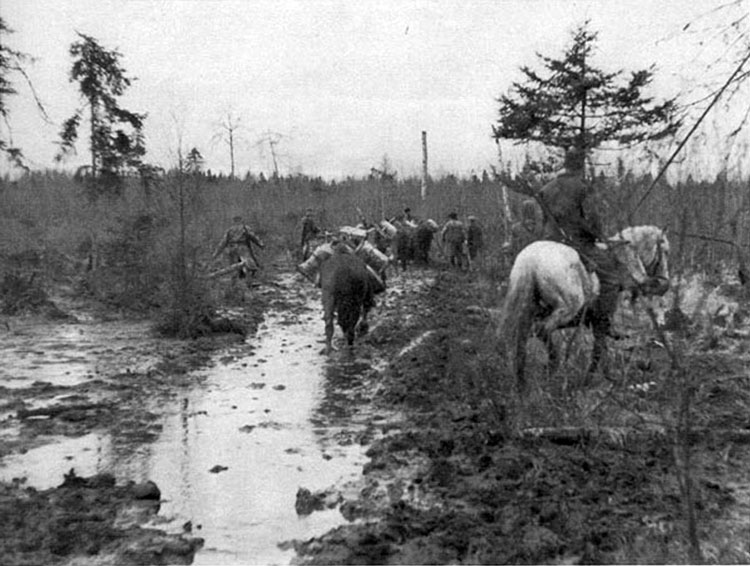
Long swampy roads. Columns move forward only with large difficulties.
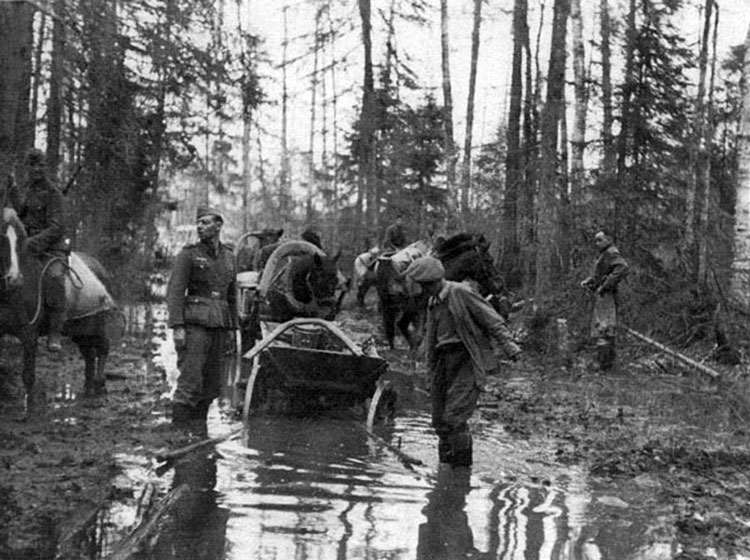
"Supply way". End of the road for the carriages.

Only horses can bring necessary supplies.
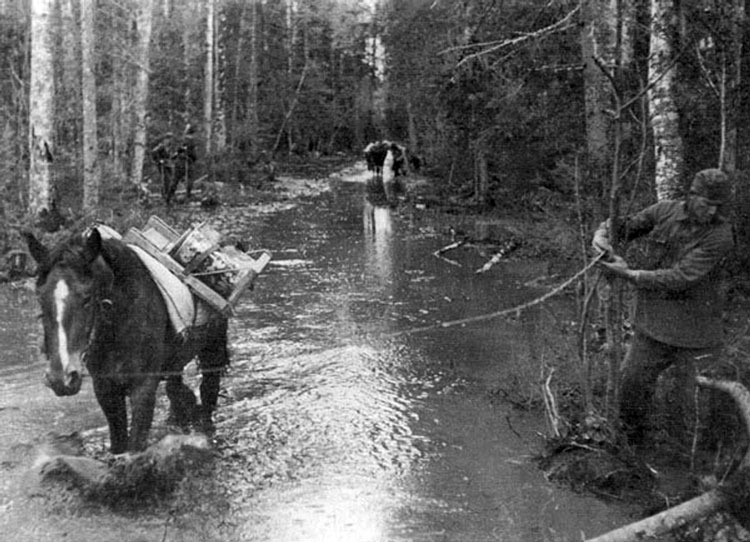
In the swampy forest.
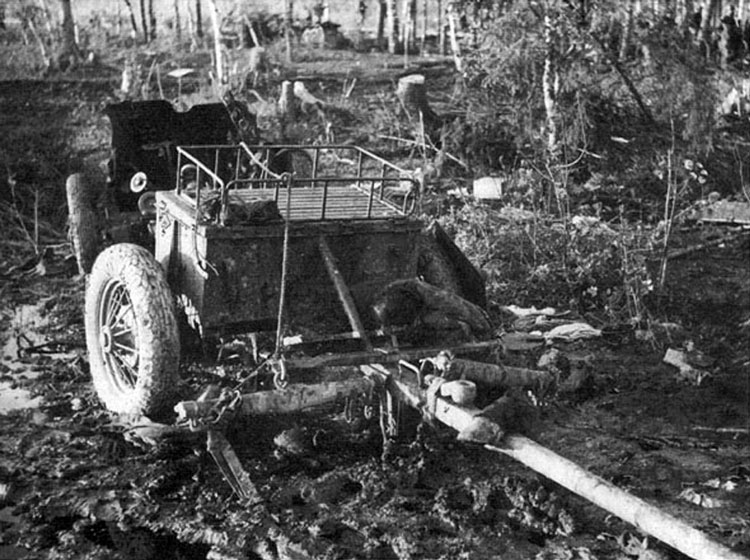
Russian ant-tank gun deserted in the swamp, Volchov Pocket, 1942.

German anti-tank gun in the battle for the Volchov Pocket, June 1941.
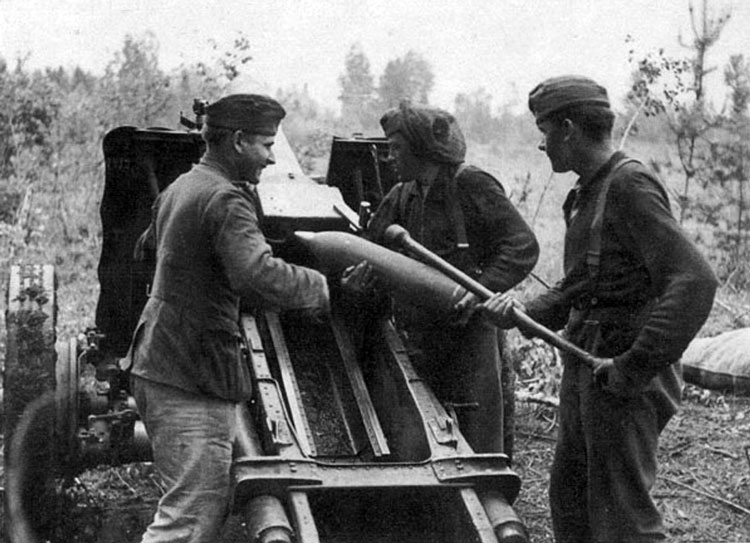
150 cm Infantry-support gun in action, Volchov Pocket, 1942.
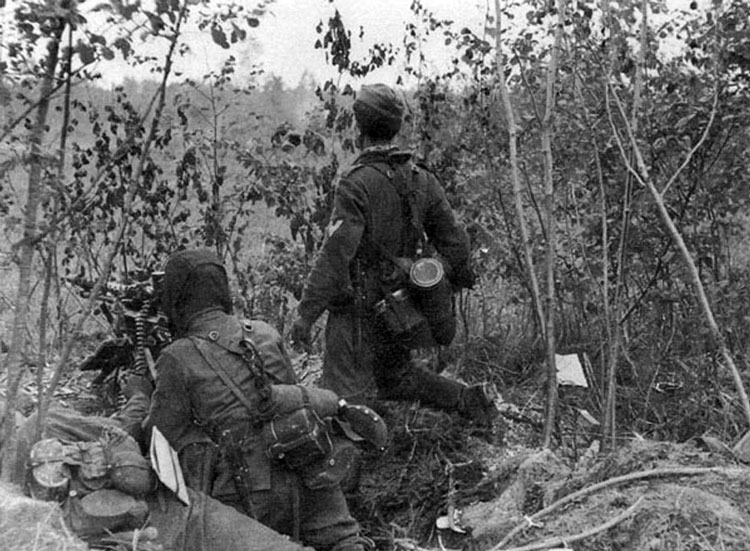
Heavy machine-gun in the Volchov forests, 1942.
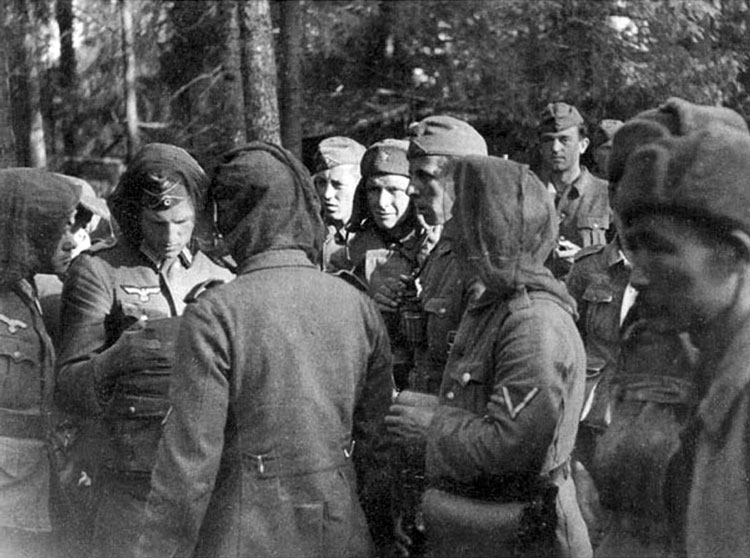
Lieutenant Miller discussing actions in Volchov Pocket.
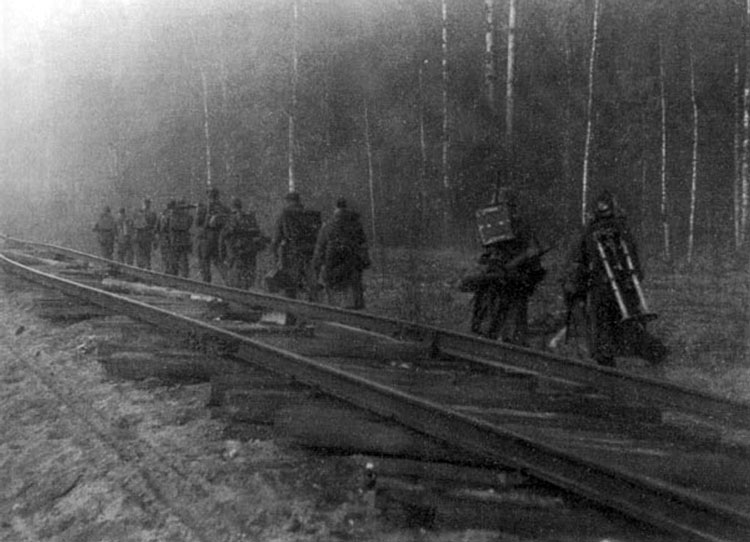
Pursuing enemy along the Tosno-Kamenka railroad, 1942.
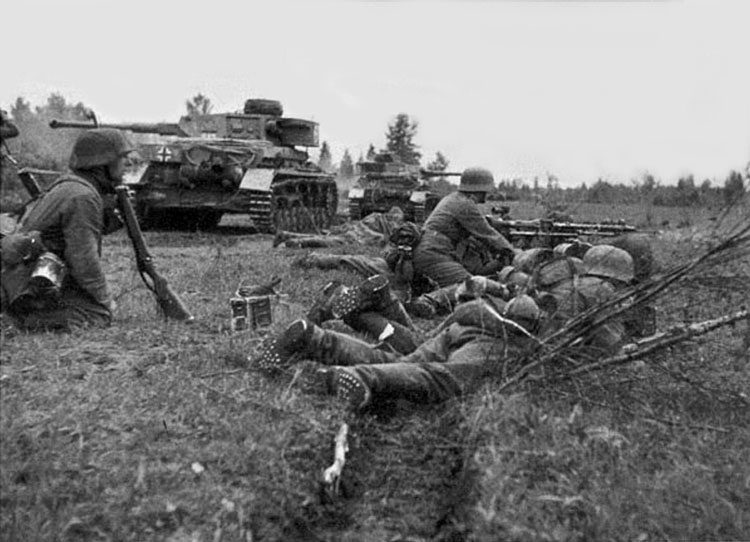
German P-IV and infantry clearing the field before Volchov forest from the enemy.

Marching forward along the railroad line near Kamenka, May 1942.
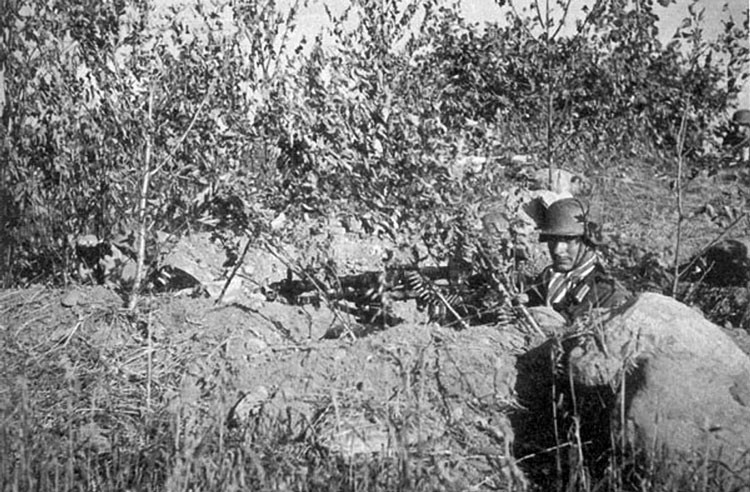
Machine-gunner in the bushes, providing flank protection.

Tank and infantry in the Battle for the Volchov Pocket, 1942.

Approach to "Erika". After spending gruesome weeks in the swamps, Russian refugees carry their belongings.

chaos, during the Battle for the Volchov Pocket, 1942.

Russian machine-guns and drums with phone cables.

Panzer of 291 division joined the fight.

Panzer IV in attack, June 1942.
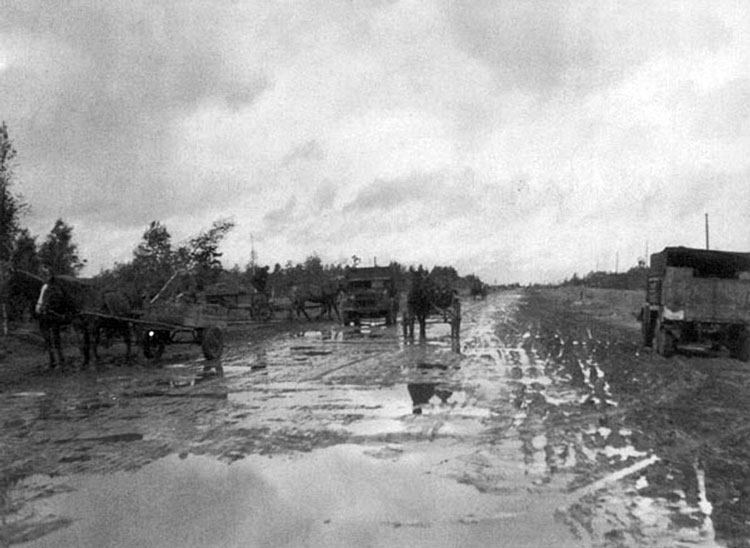
On the Chudovo Road, 1942.

Supply column near Chudovo, 1942.

Bunkers in Volchov area, May 1942.
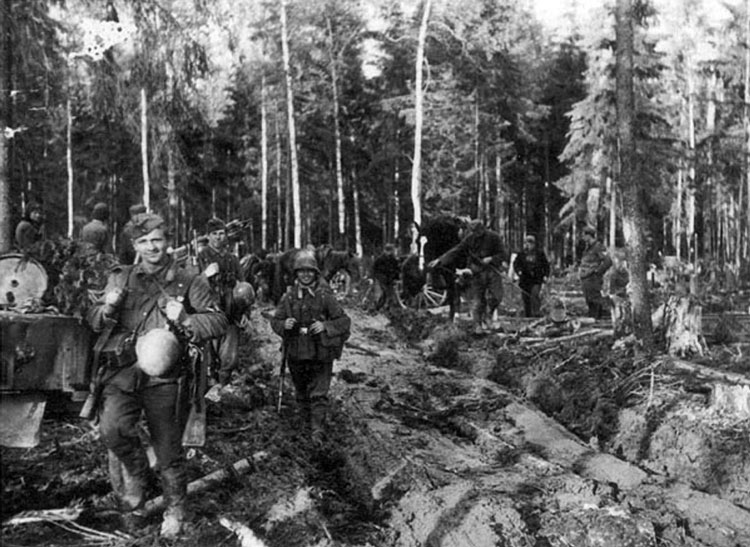
Volchov swamps are almost impregnable obstacle for men and horses.
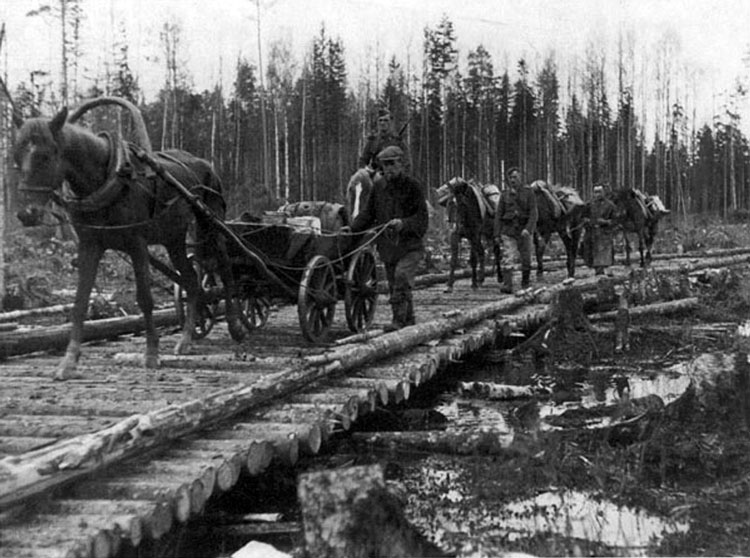
Wooden road is the safest way to cross the swamp.
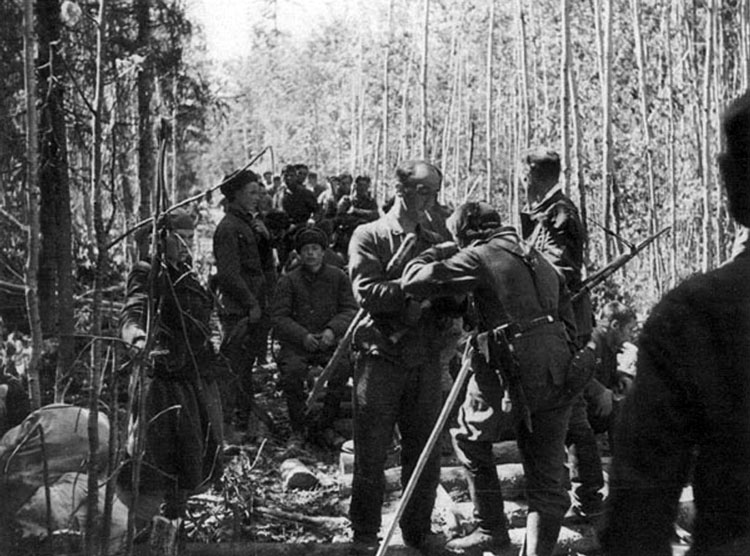
Column of the Russian POW on the "Erika" clearance, 1942.
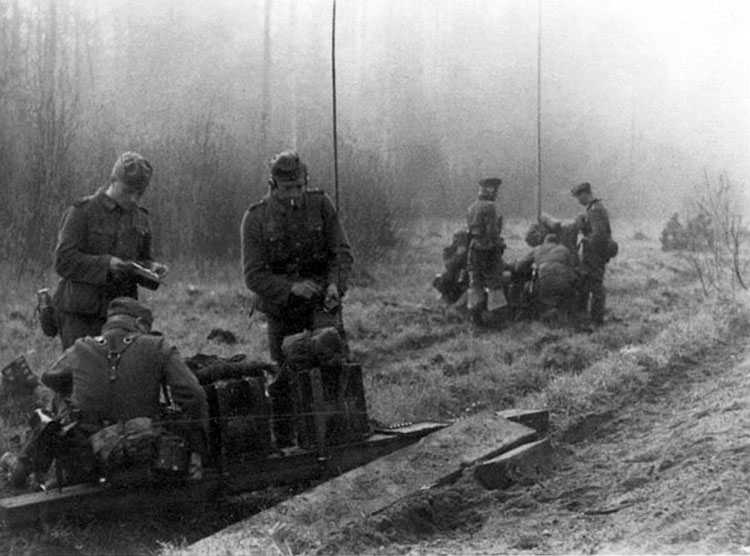
Signal unit in the battle for the Volchov Pocket, 1942.
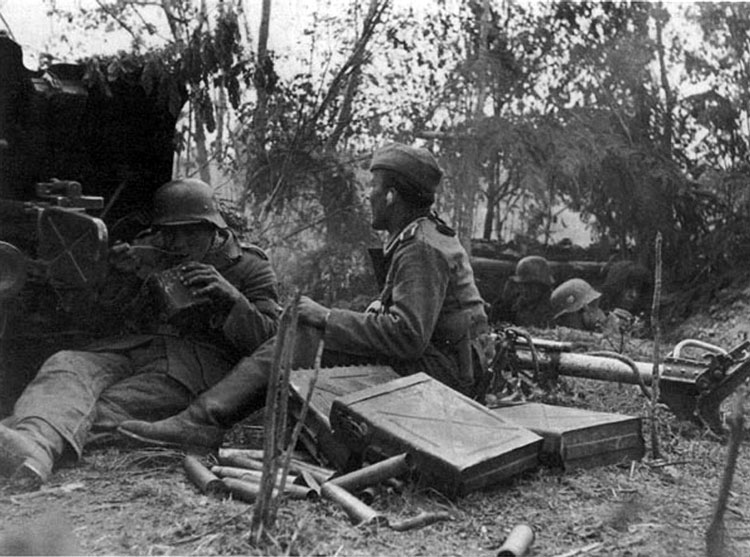
German anti-tank gun in position near Volchov, 1942.

Destroyed Russian train in the Volchov Pocket, 1942.
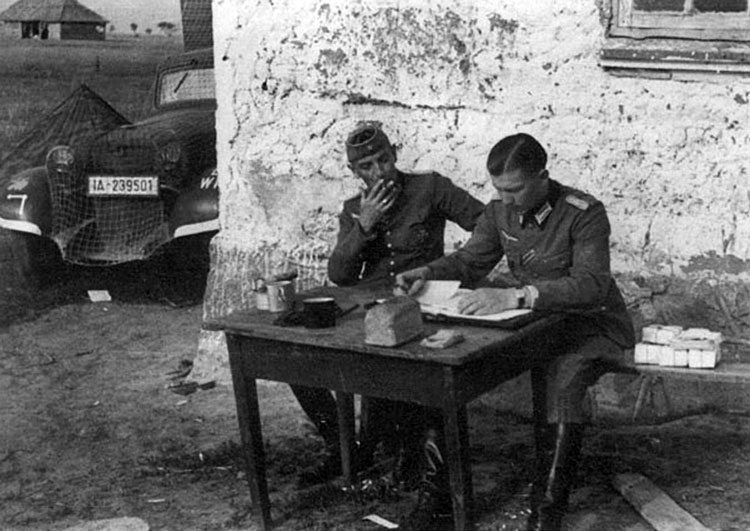
Artillery commander, major Zuhlke with his adjutant.
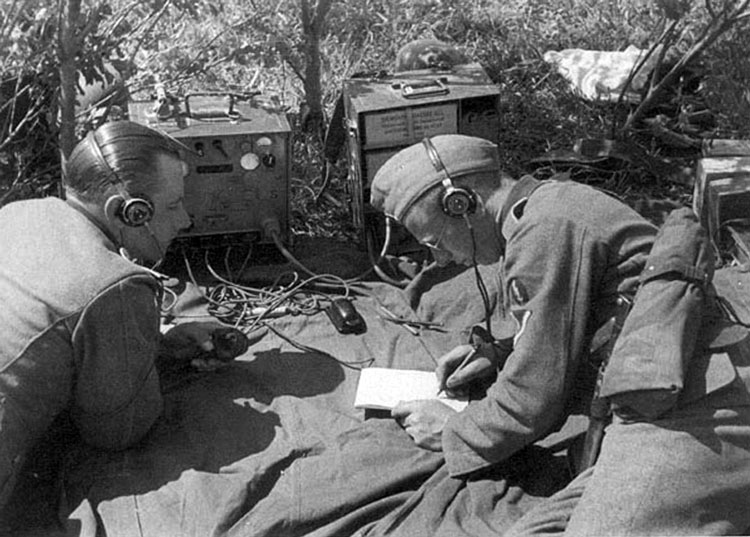
Writing radio message for the Regiment.
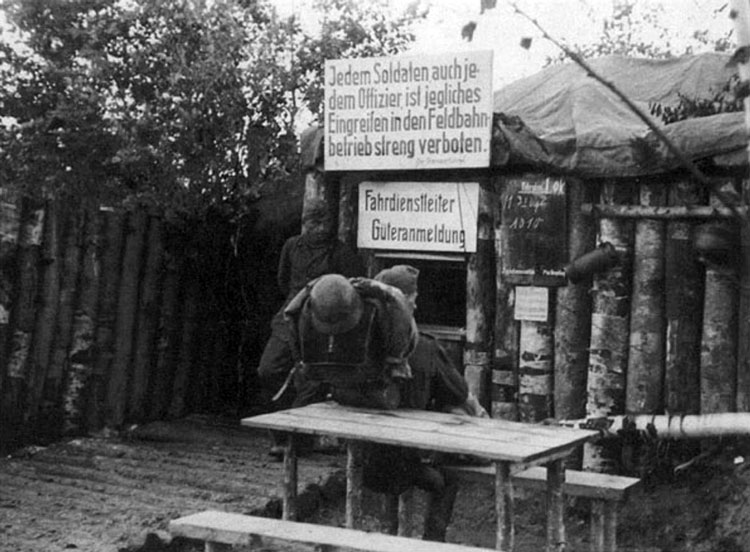
Field train station of the 291 Infantry Division near Chudovo.

Reinforcements and supplies were delivered to the Regiment by the field railroad.
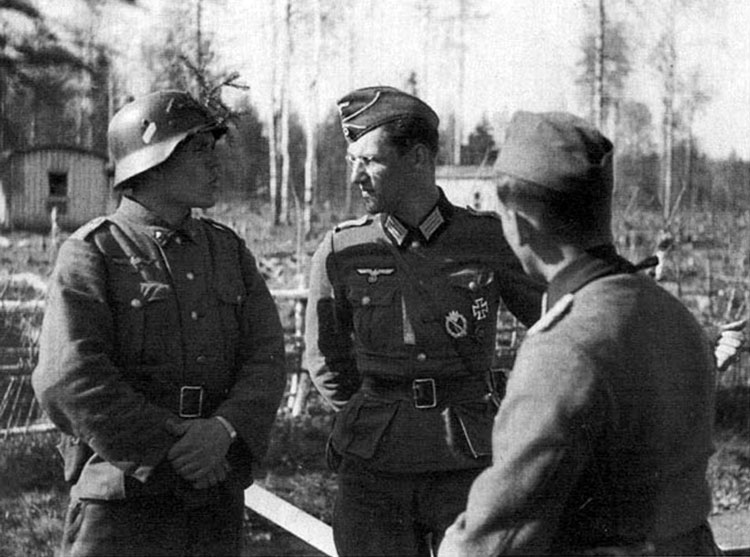
Lieutenant Muller 14./506 talking with Estonian officer.
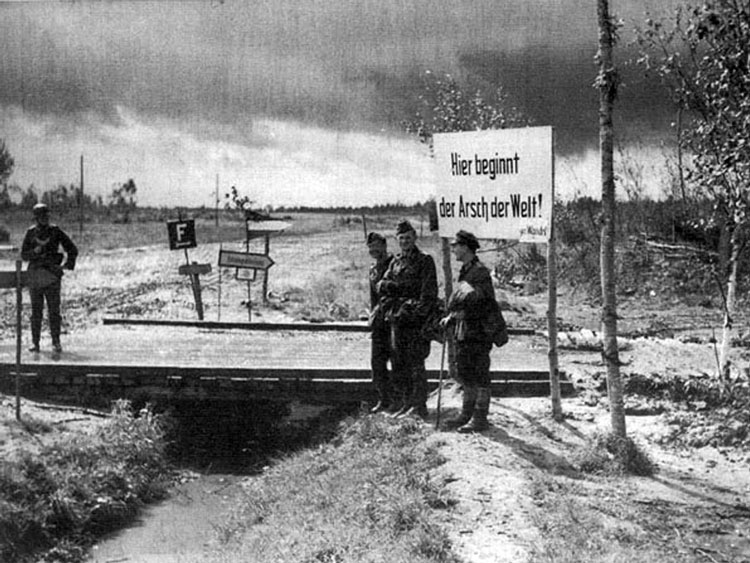
Dark clouds emphasize the sign: "Here the Hell Begins".

Sign: "Caution: this place is under enemy's surveillance".
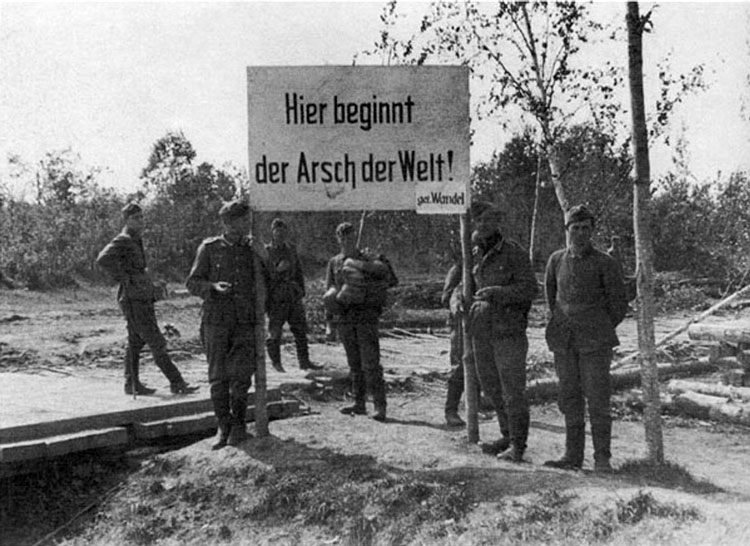
"Here the Hell Begins", the most photographed sign on the Eastern Front, on the road Chudovo-Leningrad.
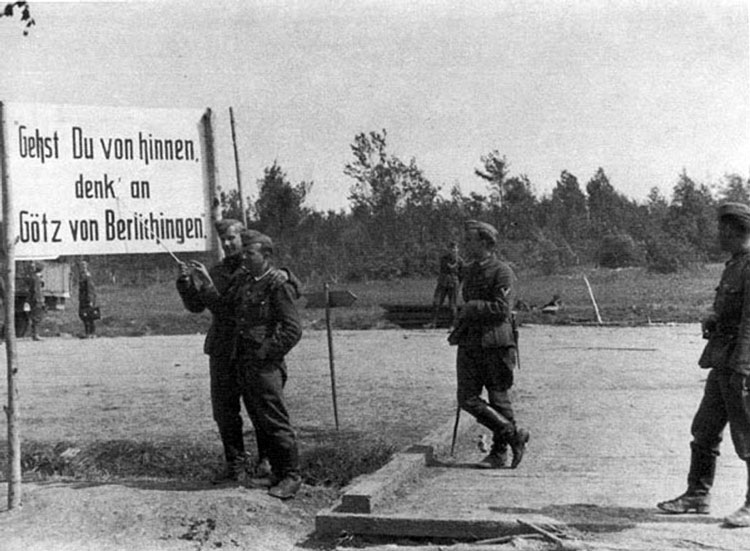
The opposite side of the sign.

Patrol's carefully moving through the forest, occupied by the enemy.

Bridge on the Tosno-Kamenka road, repaired by pioneers.

On the "Oberst Gurran" Bridge near Kamenka, Volchov area.

Officers of the Regiment 506, with Colonel Gurran in the lead: Ober-Lieutenant Tewaag, Oberst Gurran, captain Weyel, Lieutenants Muller and Lewald.
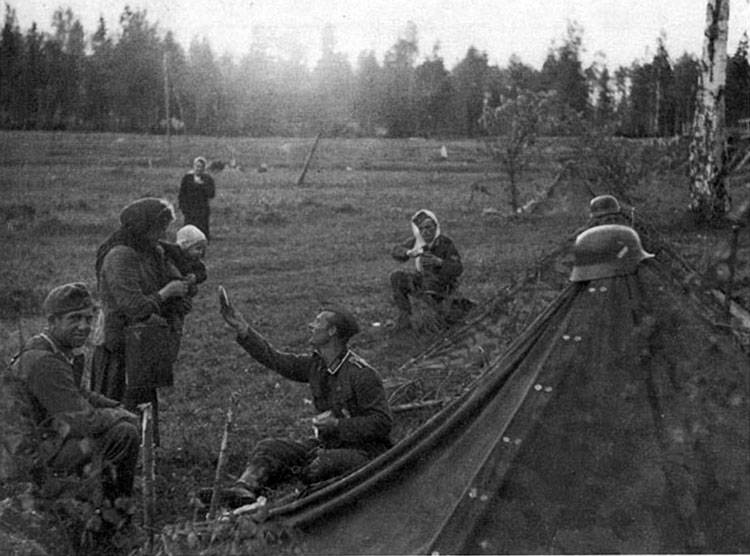
German soldiers share their ration with locals.
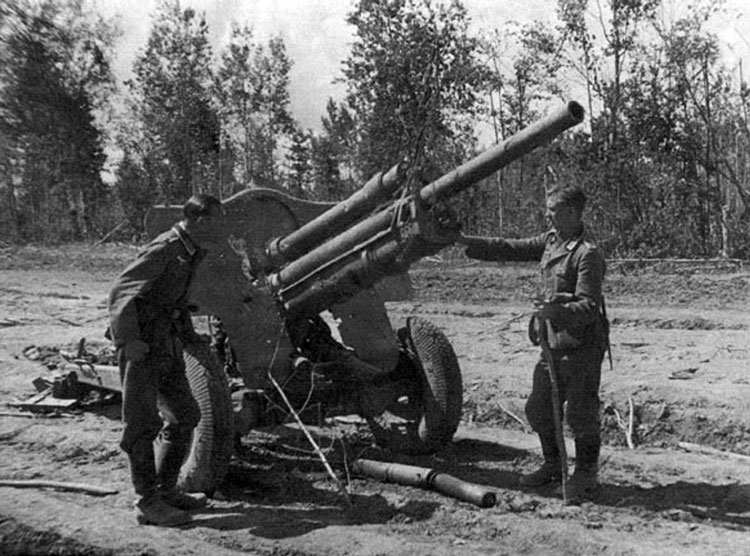
Damaged Russian gun being critically reviewed by the Germans.
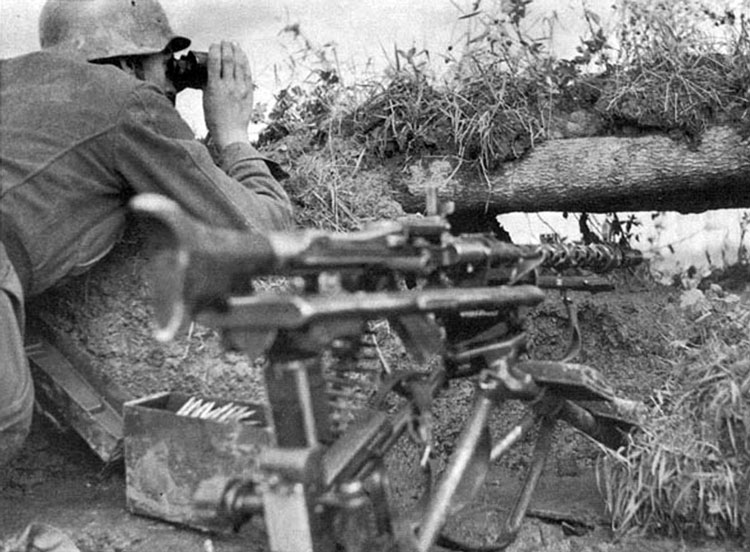
Machine gun controlling the no-mans land, Volchov position, 1942.
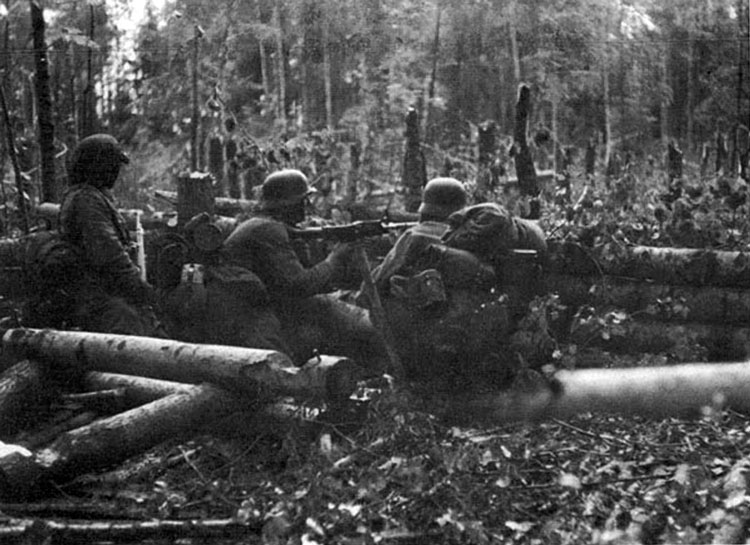
Forward fire position with cleared field of fire
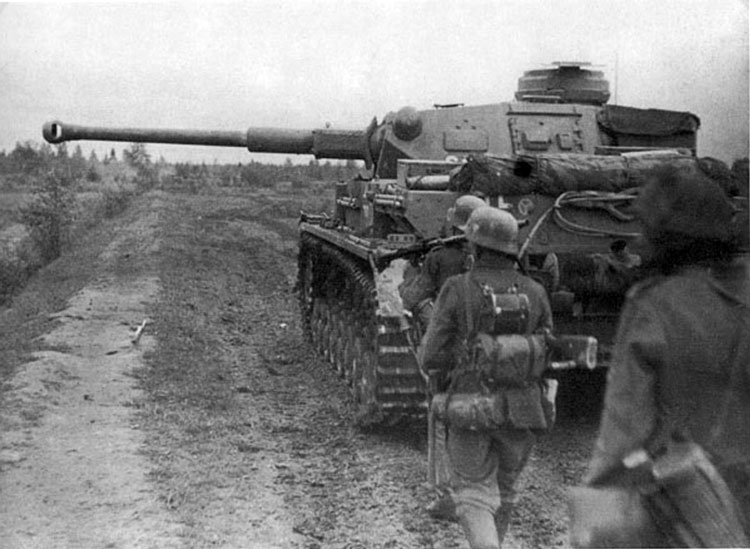
Panzer-IV join the fight near Volchov, 1942.

German tanks and infantry attacking the enemy, June 1942.
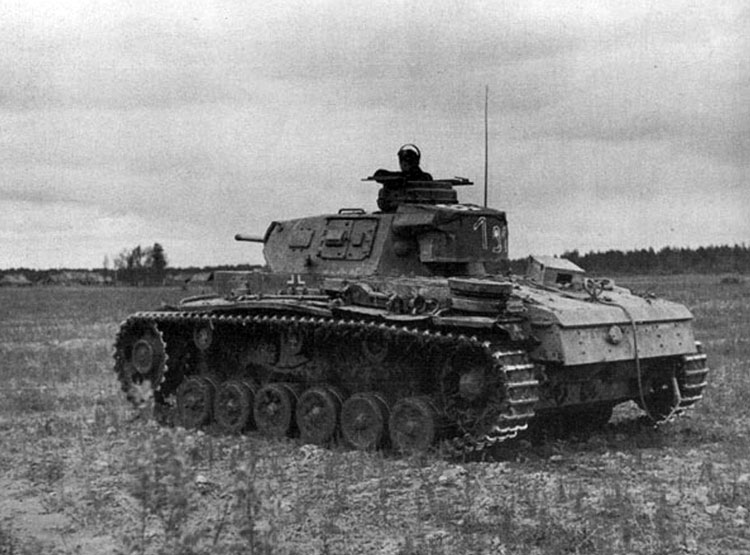
Panzer-III attacking the village, June 1942.
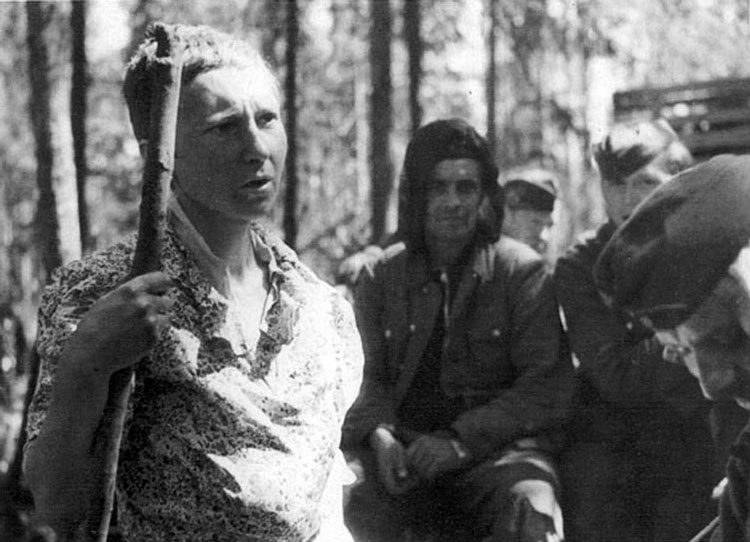
Woman from Volchov Pocket talks about suffering, poverty and starvation, June 1942.
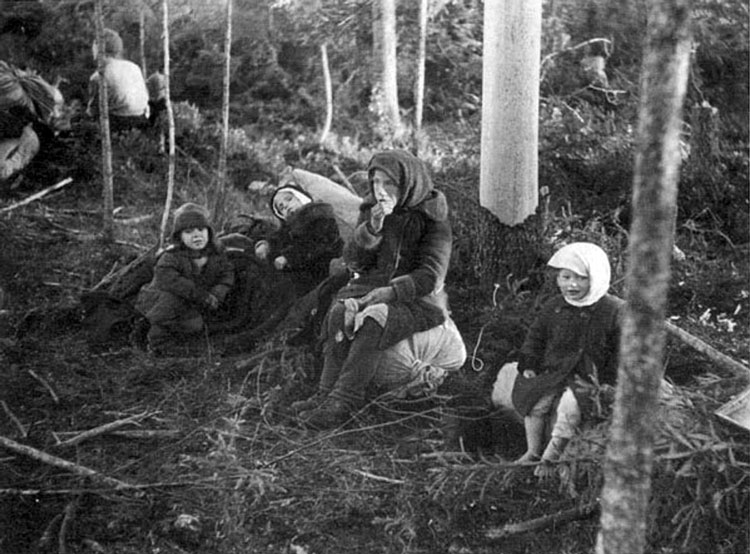
In the middle of the forest. Locals had to eat a bark to suppress hunger.

Group of Russian based, which were starving for weeks.
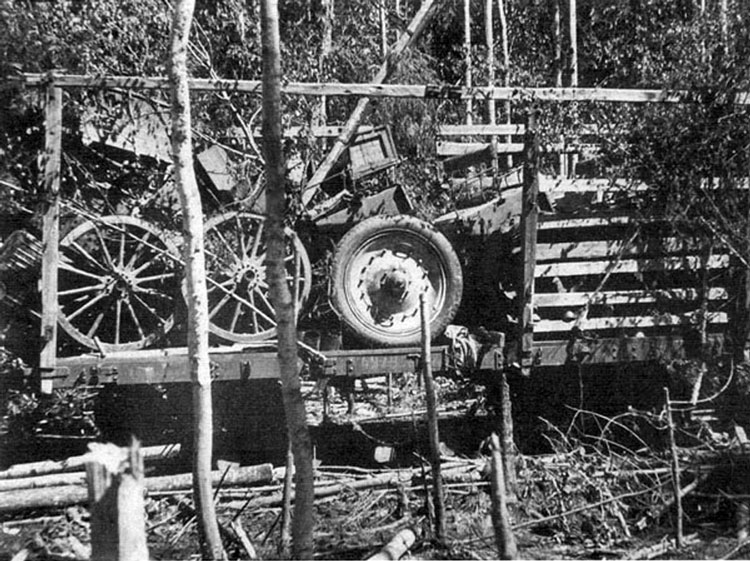
Loaded Russian war materiel in the Volchov pocket, 1942.

Inspection of Russian boxes with ammunition and phone cable drums.

A kid was left behind to watch belongings of his family, hiding in the Volchov forests, June 1942.
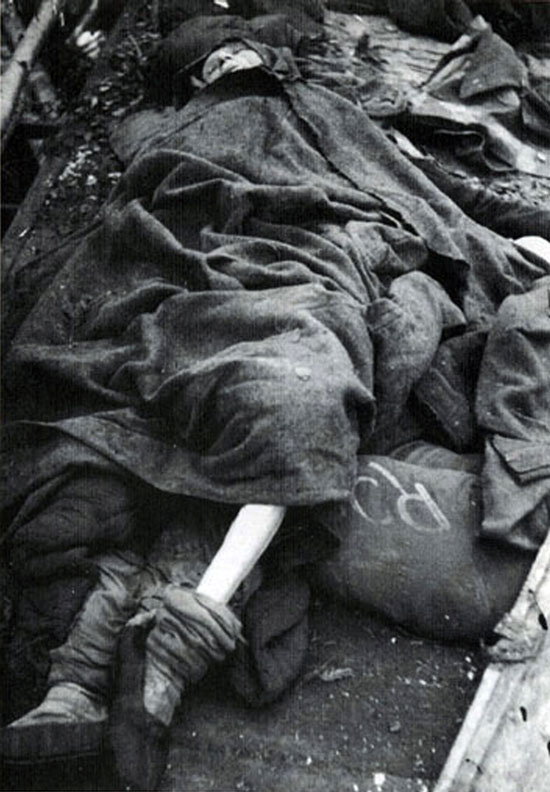
Woman died from starvation in swampy Volchov forests, 1942.
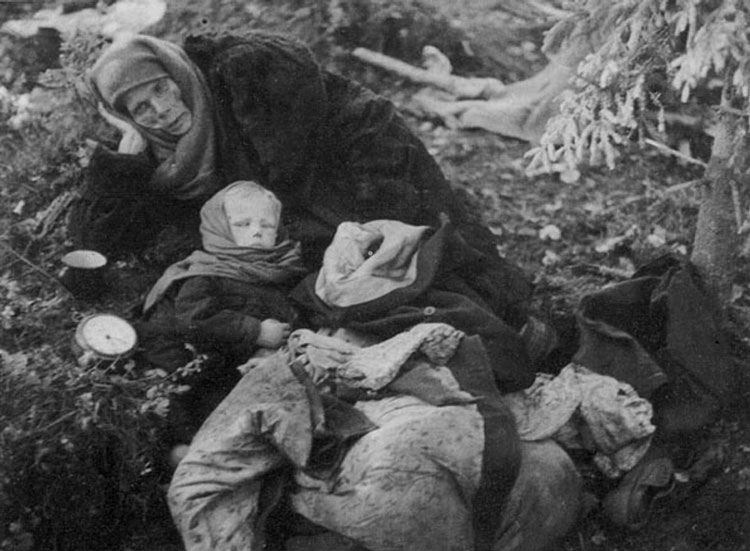
Only this child survived from the whole family.
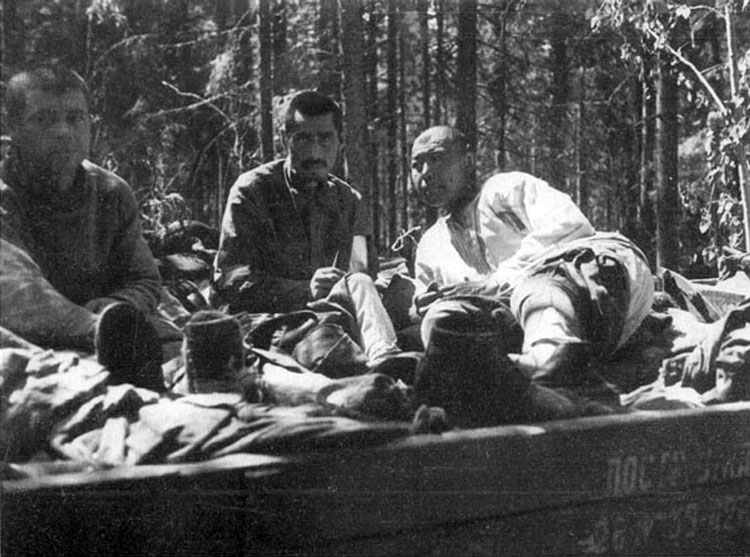
Wounded Russians, left behind in the Volchov Pocket, 1942.
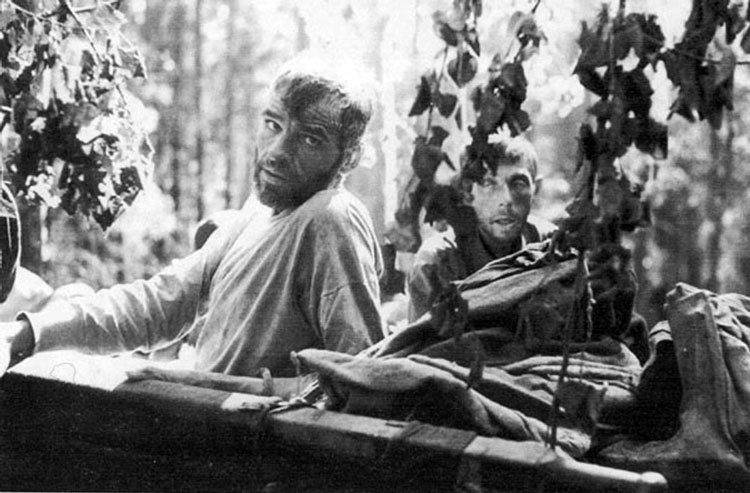
Exhausted and abandoned Russian soldiers in the Volchov forest, June 1942.
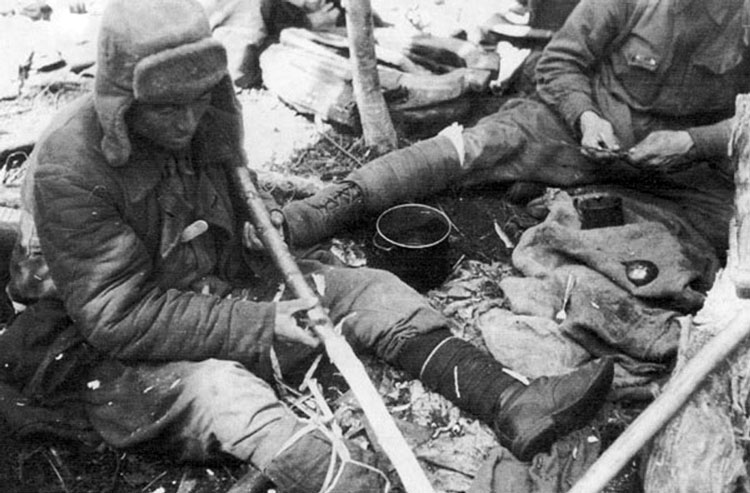
Soldiers of the Russian Army under General Vlasov cooking the bark from the trees.
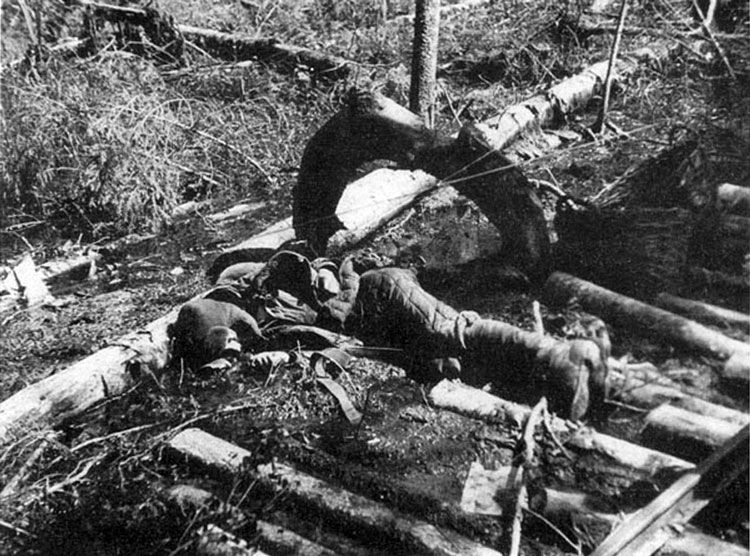
Russian dead in the Volchov swamp, 1942.
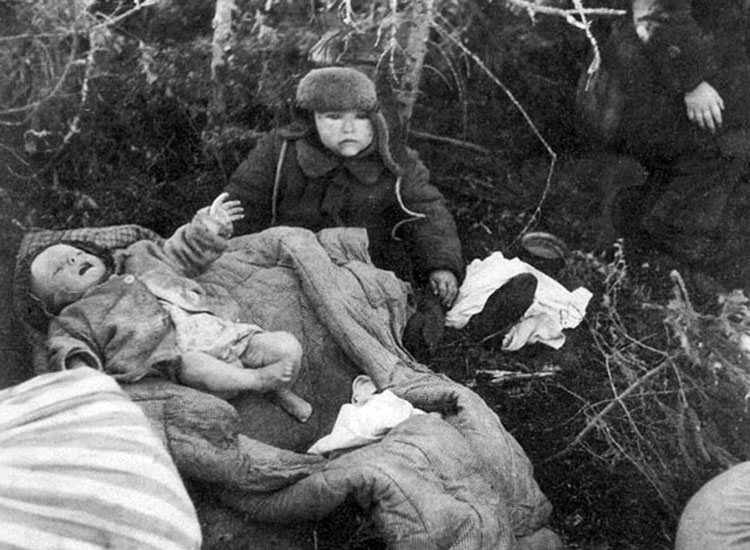
This kid and a tot were found in the Volchov area, June 1942.
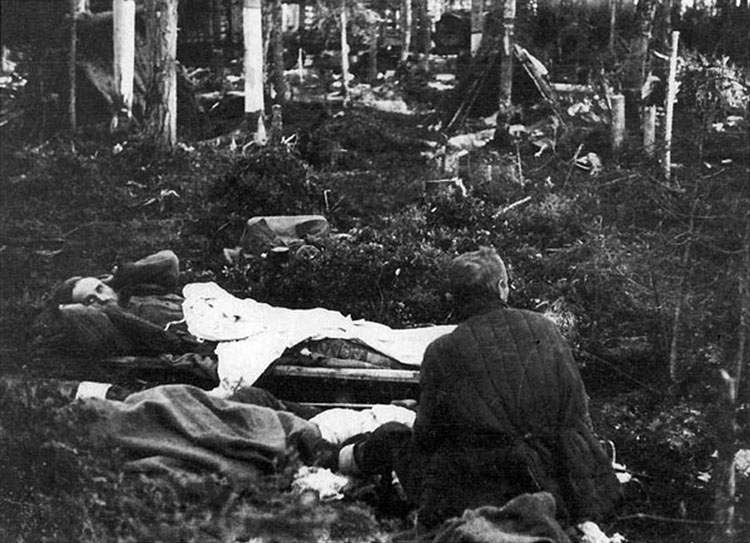
Wounded, captured in the Volchov Pocket. Bark from the trees on the background was eaten to abate hunger.

Deserted child in the Volchov Pocket, 1942.

Tragedy in the swamps. Russian soldier committed suicide in fear for being captured or unable to endure more hardship.

Russian wounded can be seen everywhere in the Volchov Forests. Desperation is written on their faces.
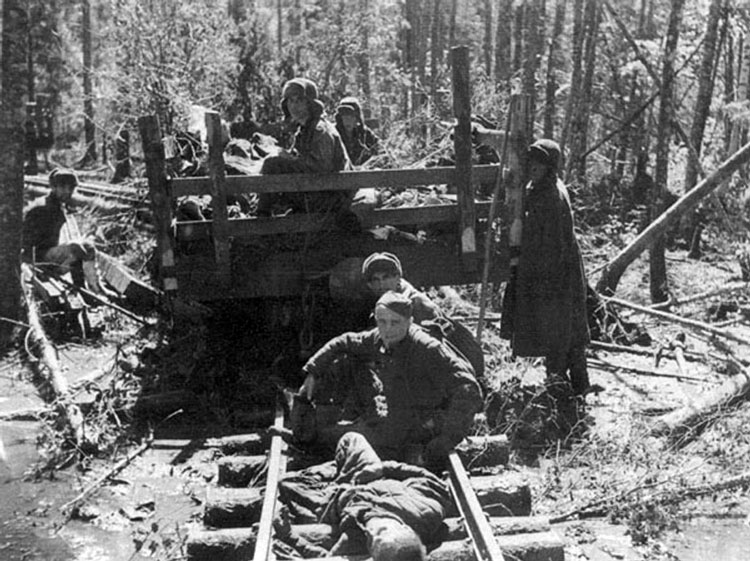
Wounded Russian soldiers, captured in the Volchov Pocket, 1942.
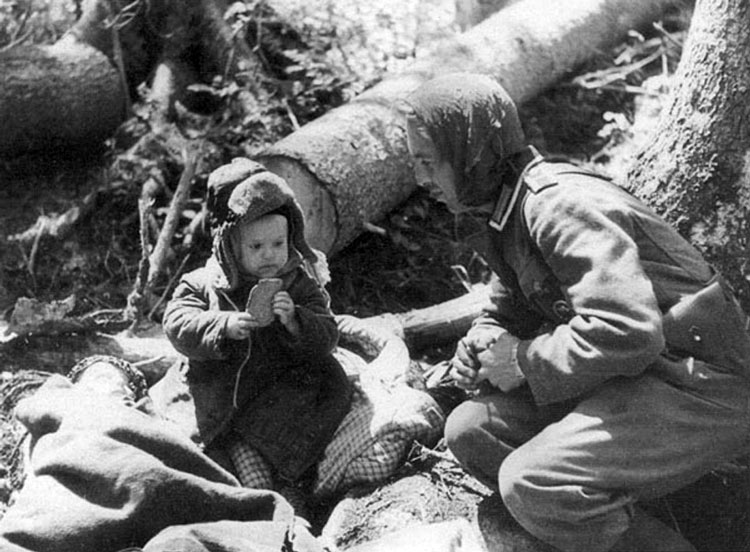
This kid hasn't understood yet, that he was given a piece of real bread.
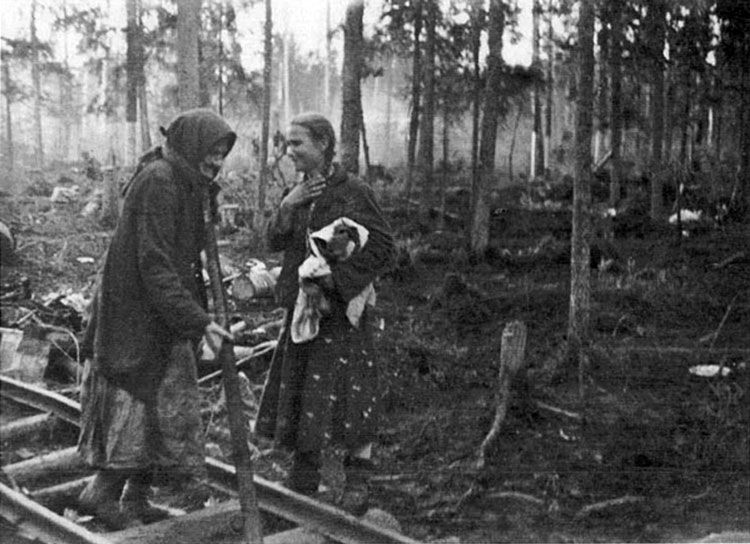
Desperation in Volchov Pocket.
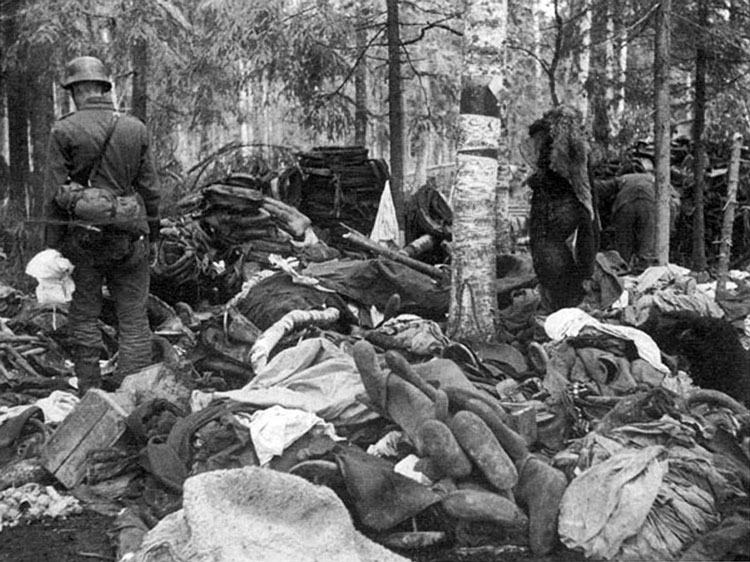
Supplies of Russian winter clothing, captured in Volchov Pocket, 1942.
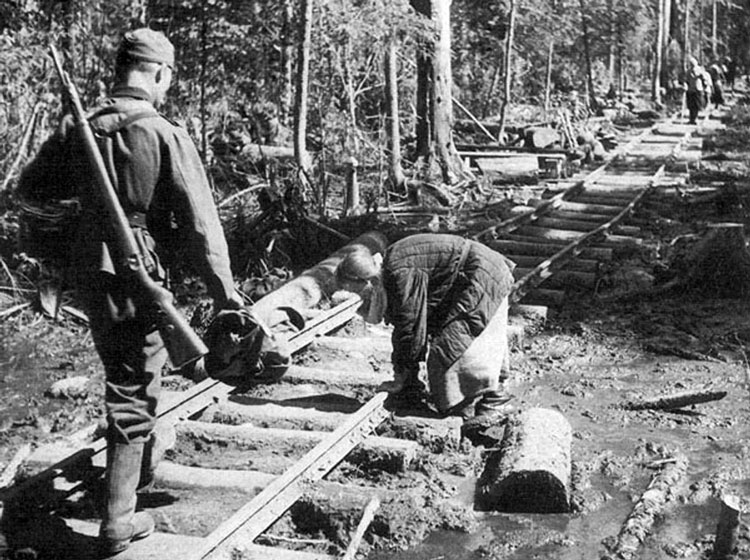
Russian woman came to the railroad.
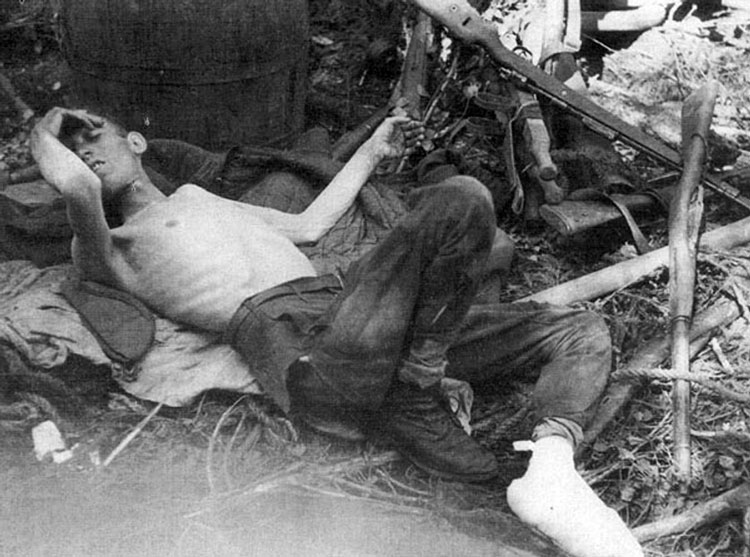
Completely exhausted wounded Russian in the Volchov Pocket, 1942.
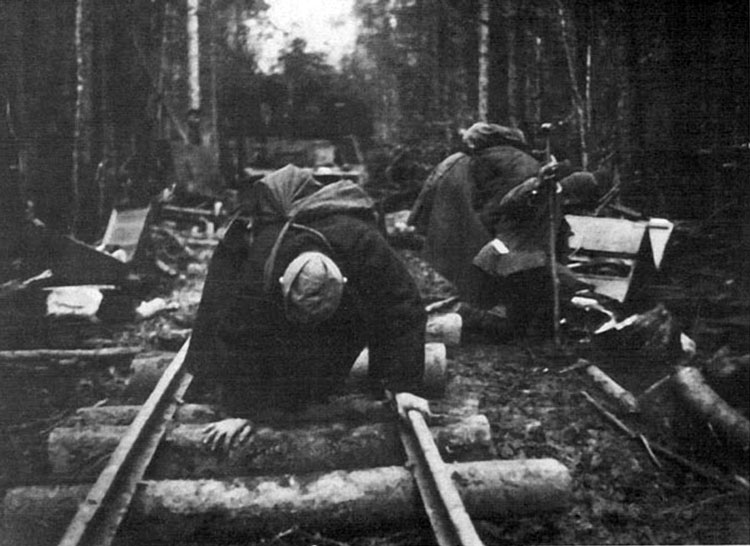
Russian wounded moving out of the clearance using rails.

Russian crawler on the railway platform in the Volchov Pocket, 1942.
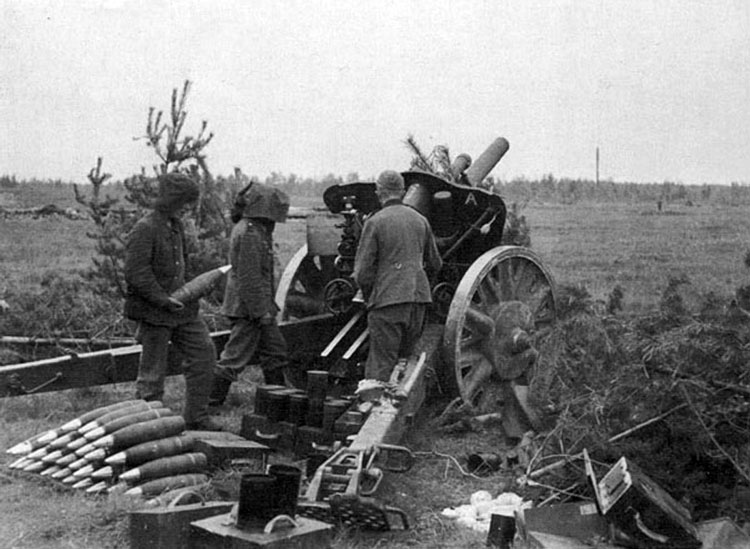
105 mm gun firing on the target in the Volchov Pocket, 1942.
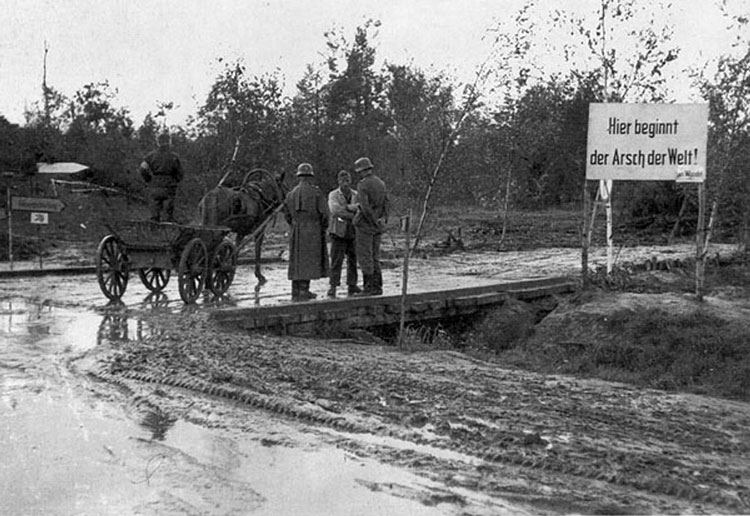
Time of mud roads has arrived.
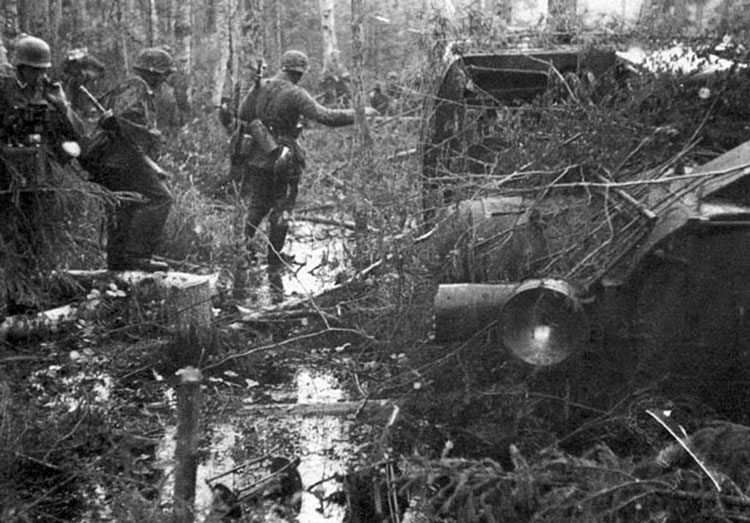
Transportation became impossible.
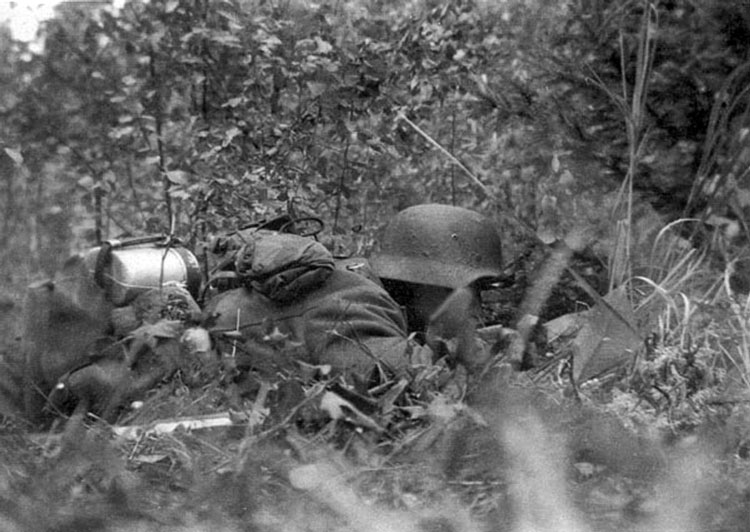
Hideout in the forest.
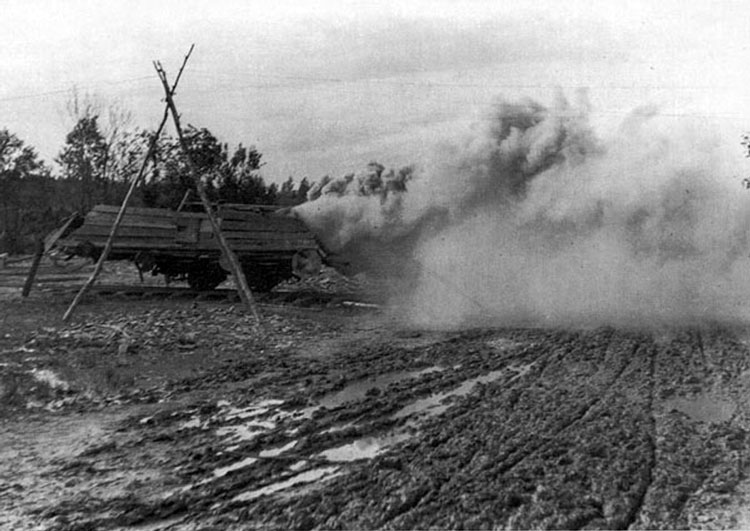
Blown up railway carriage.
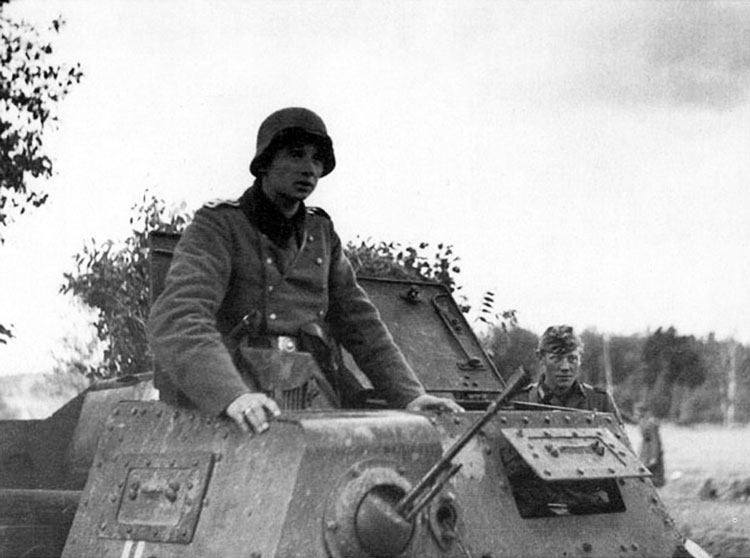
Press photographer Gundlach in the captured Russian tankette.
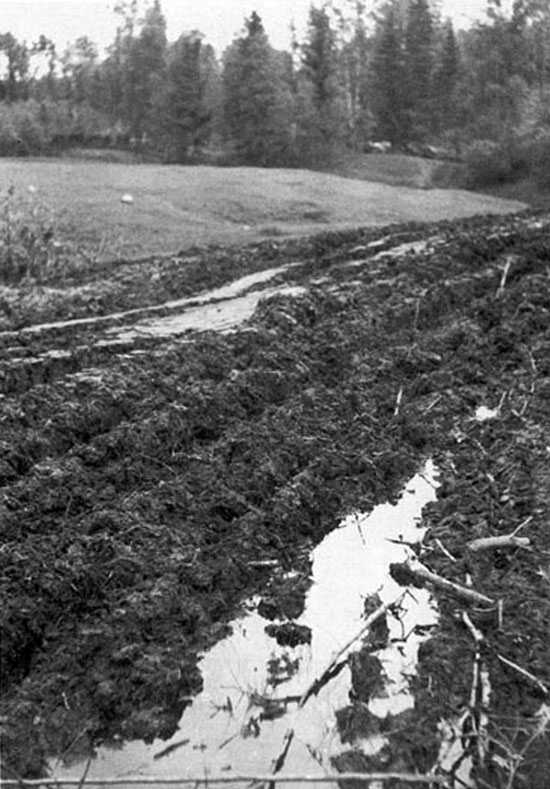
"Road" in the Volchov area, May 1942.
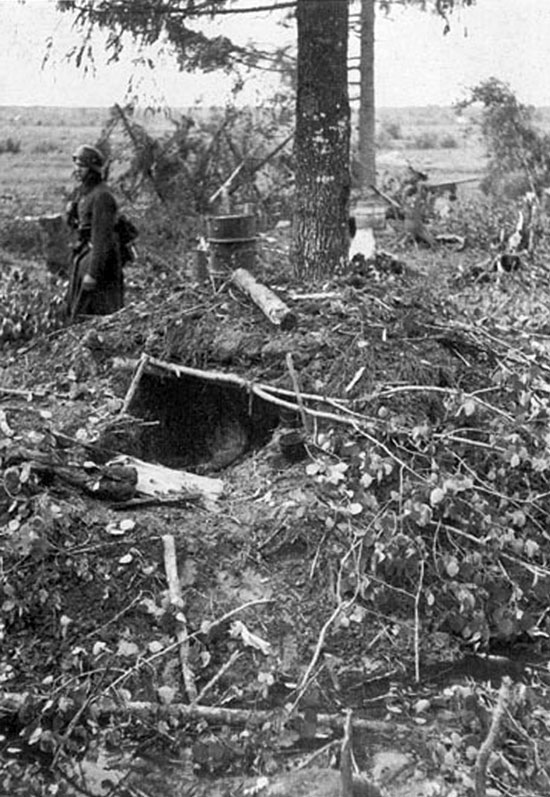
Wounded Russian soldier was hiding in the subterranean shelter, June 1942.
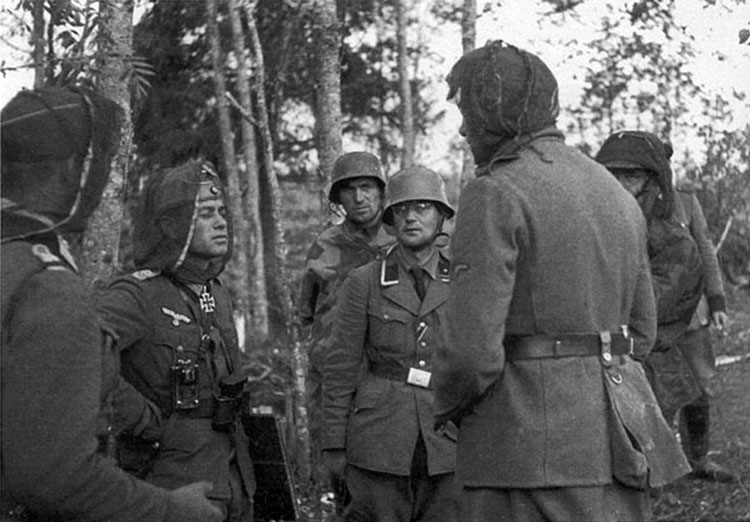
Captain Weyel talking with Estonian officer and translator in the Volchov Forest.
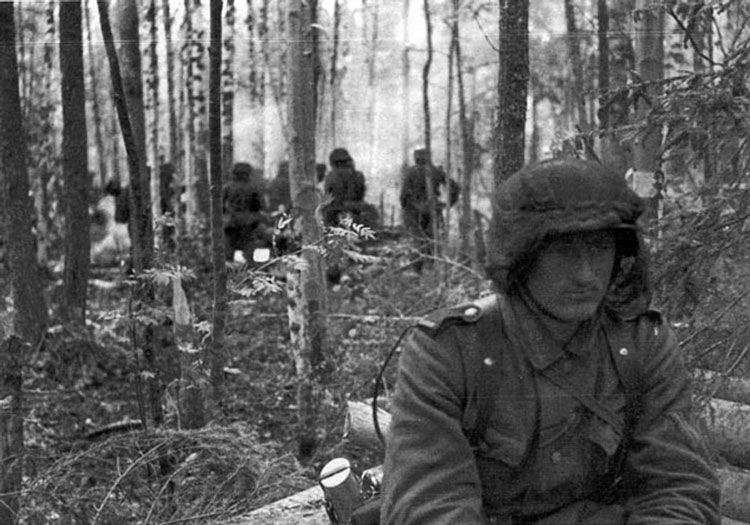
German soldiers in the Volchov Forest, 1942.

Captain Weyel talking with translator in the closing stage of the Battle for the Volhov Pocket, 1942.
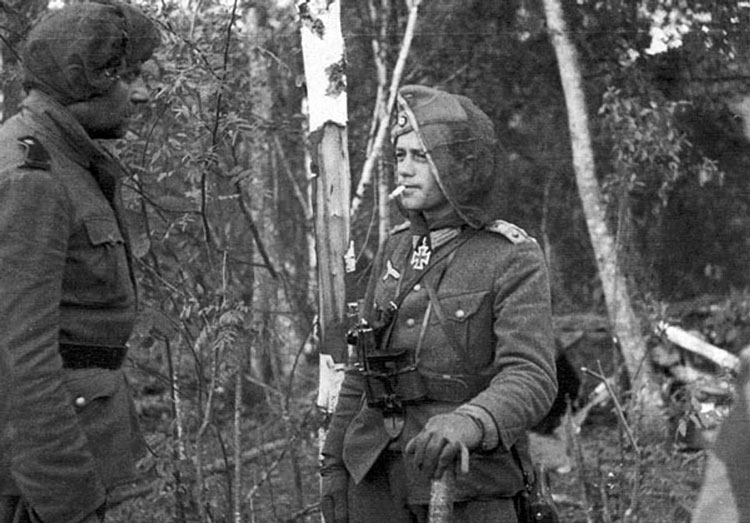
Captain Weyel talking with translator in the closing stage of the Battle for the Volhov Pocket, 1942.

Supply and communications between HQ and bunkers in the forest are possible only by the roads, made from the logs.
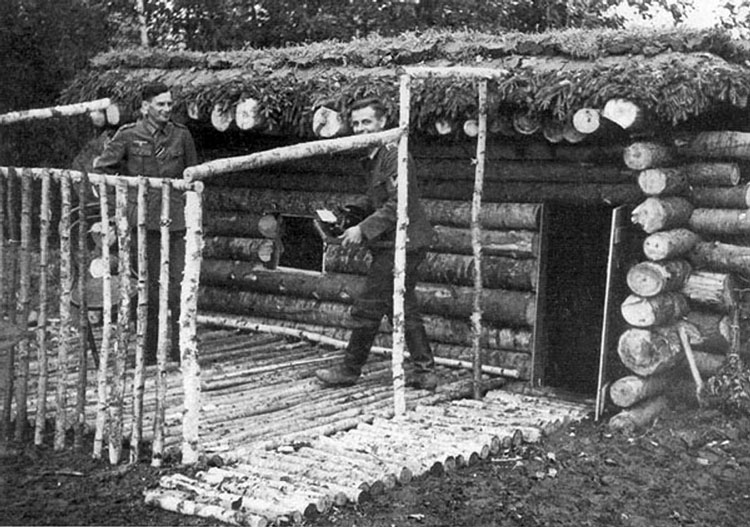
Supply and communications between HQ and bunkers in the forest are possible only by wooden roads.